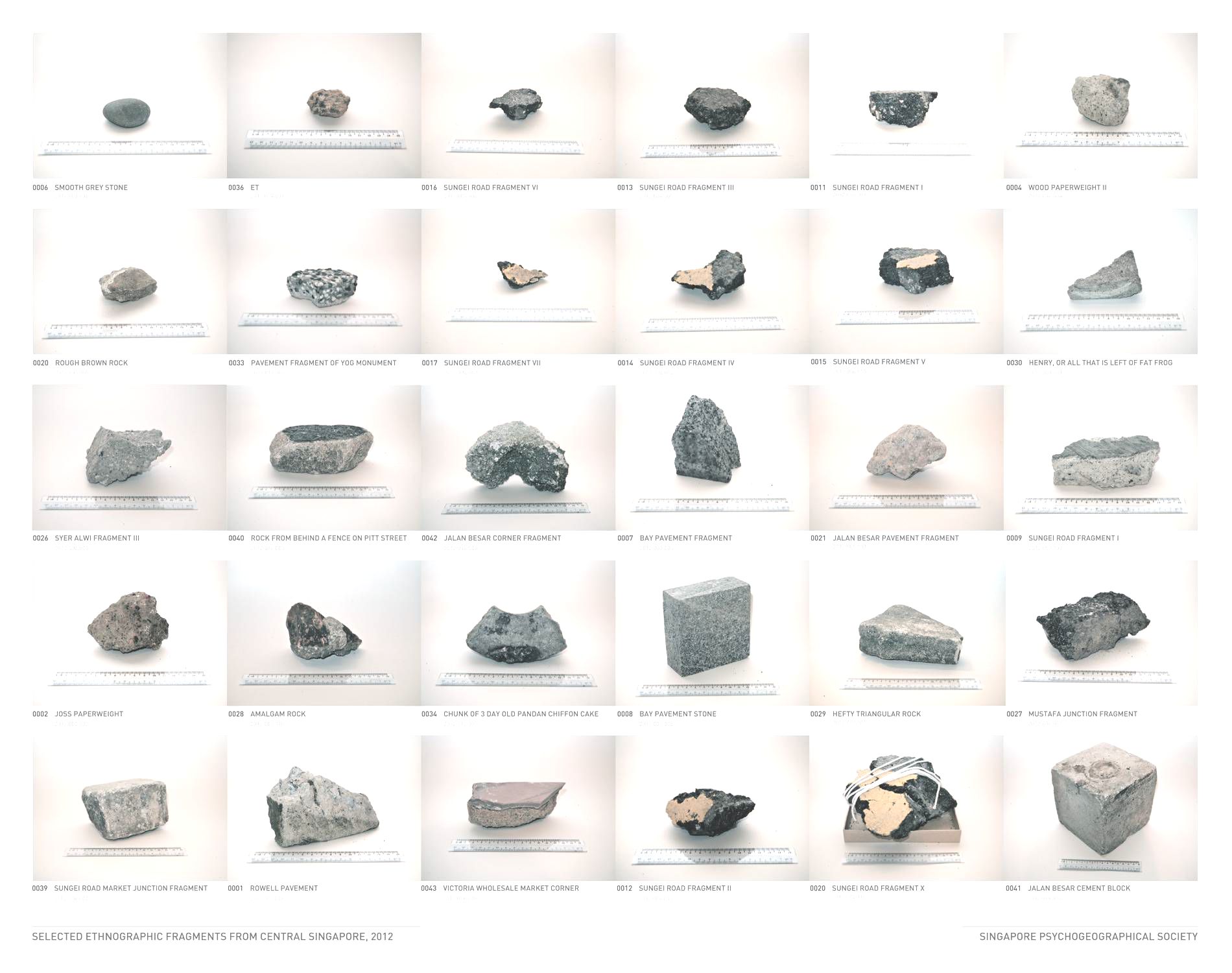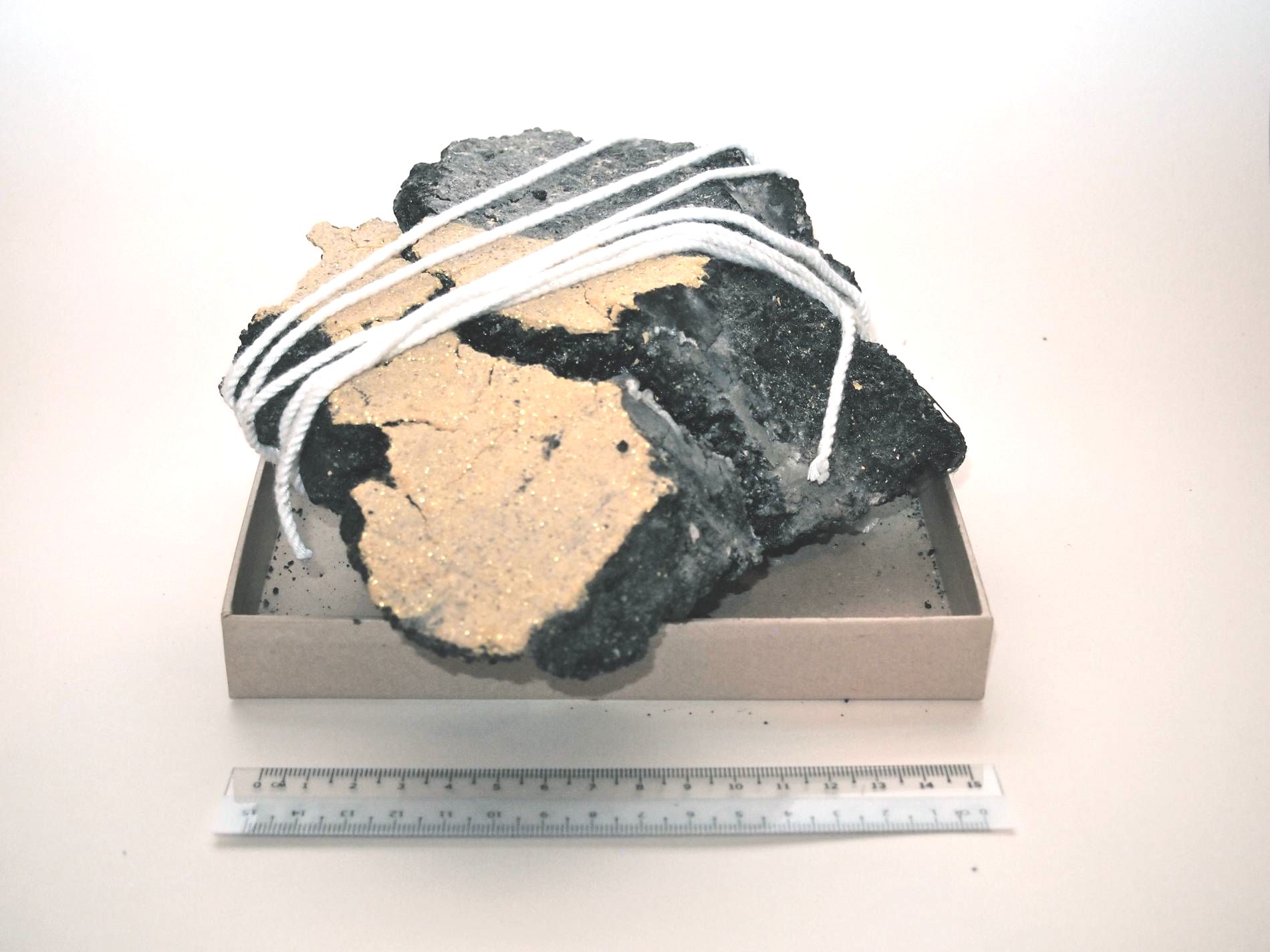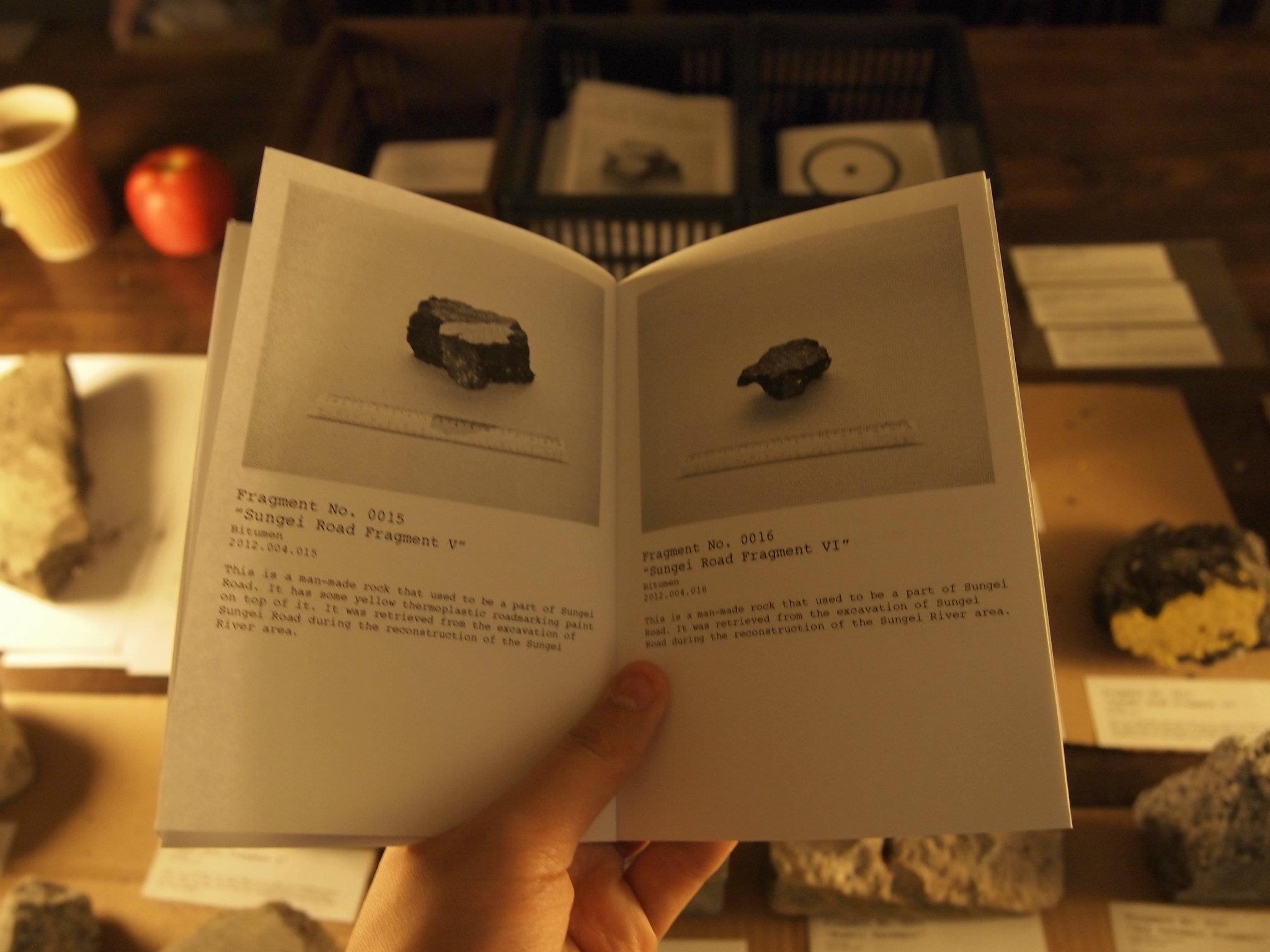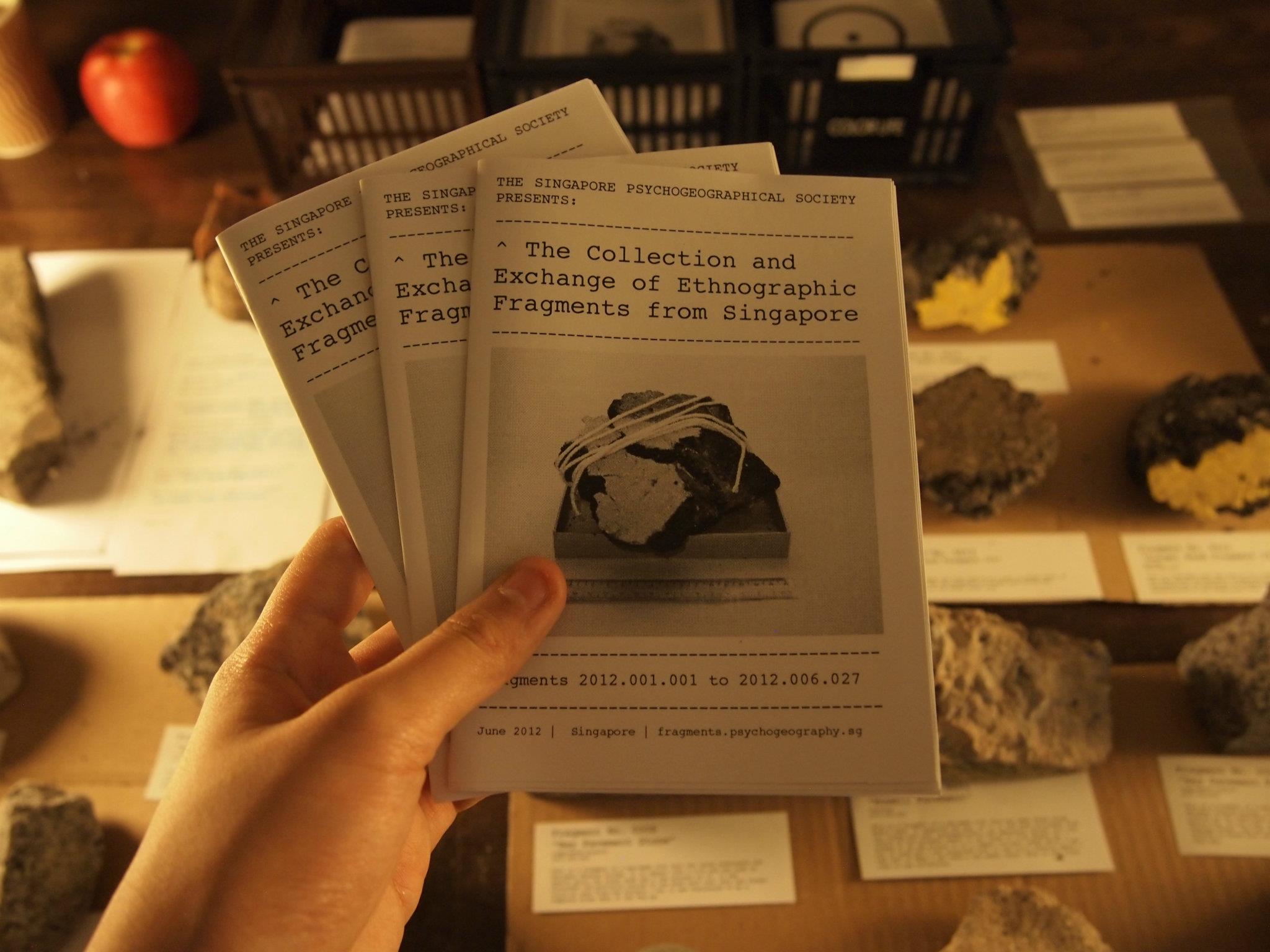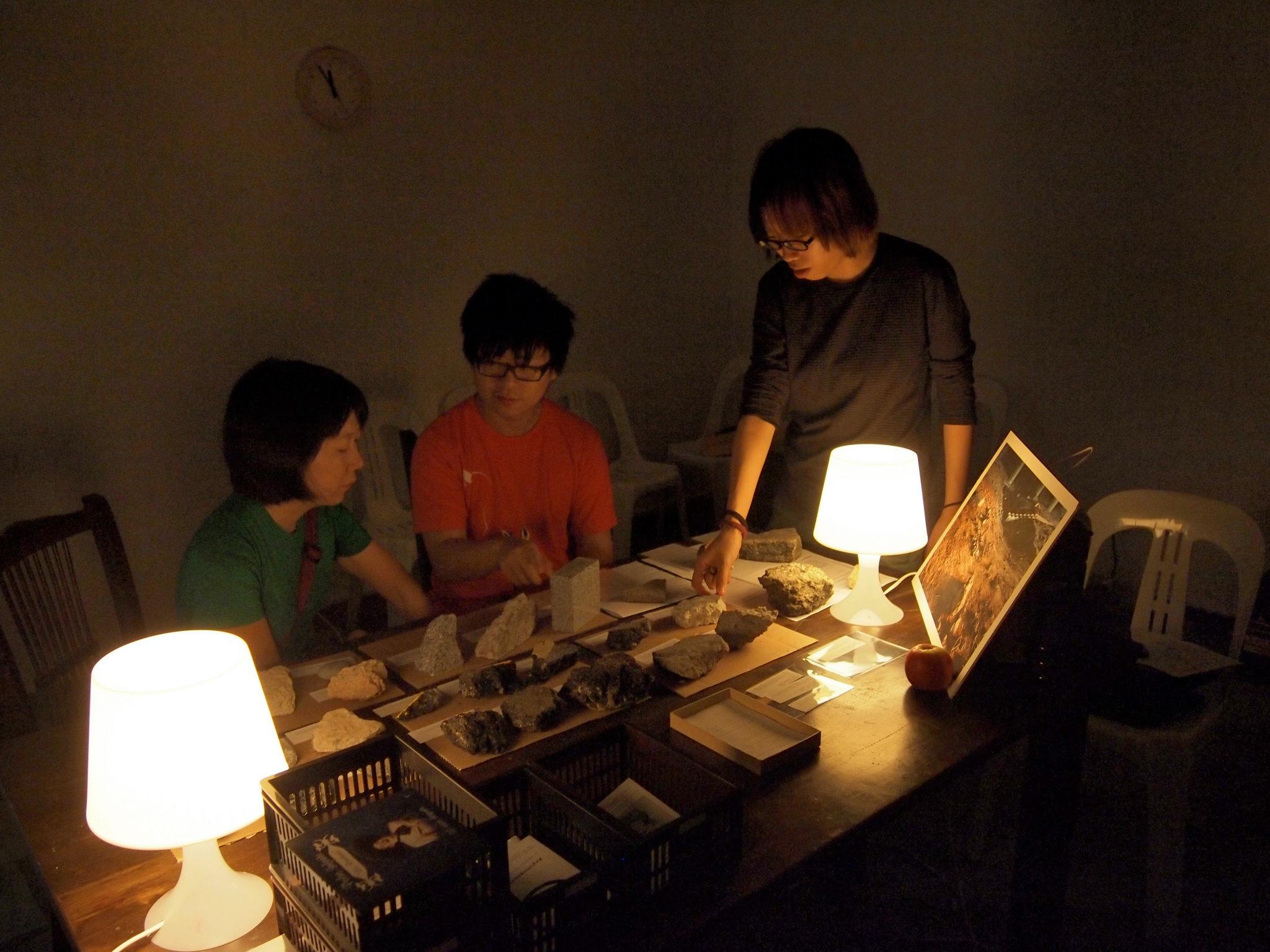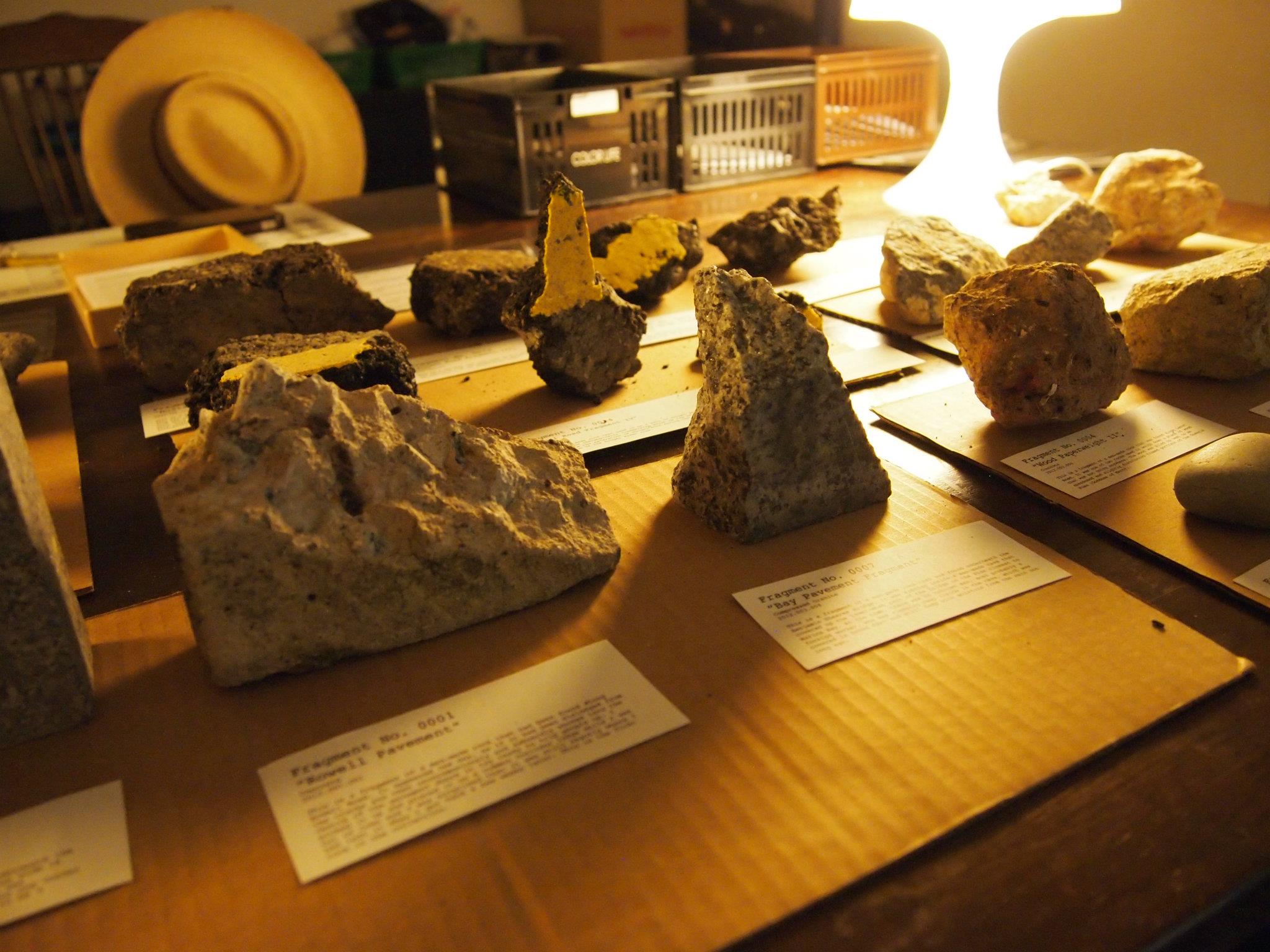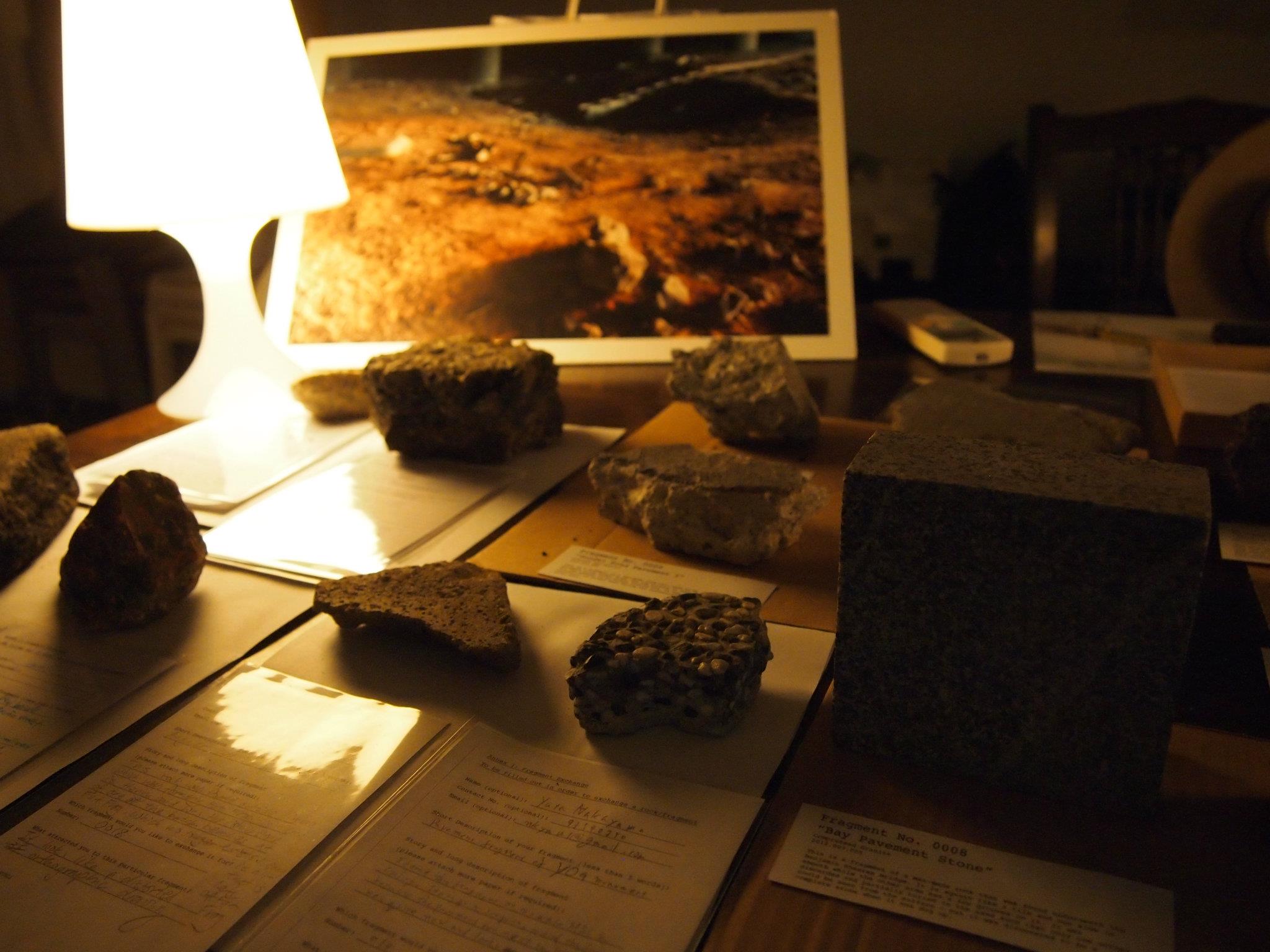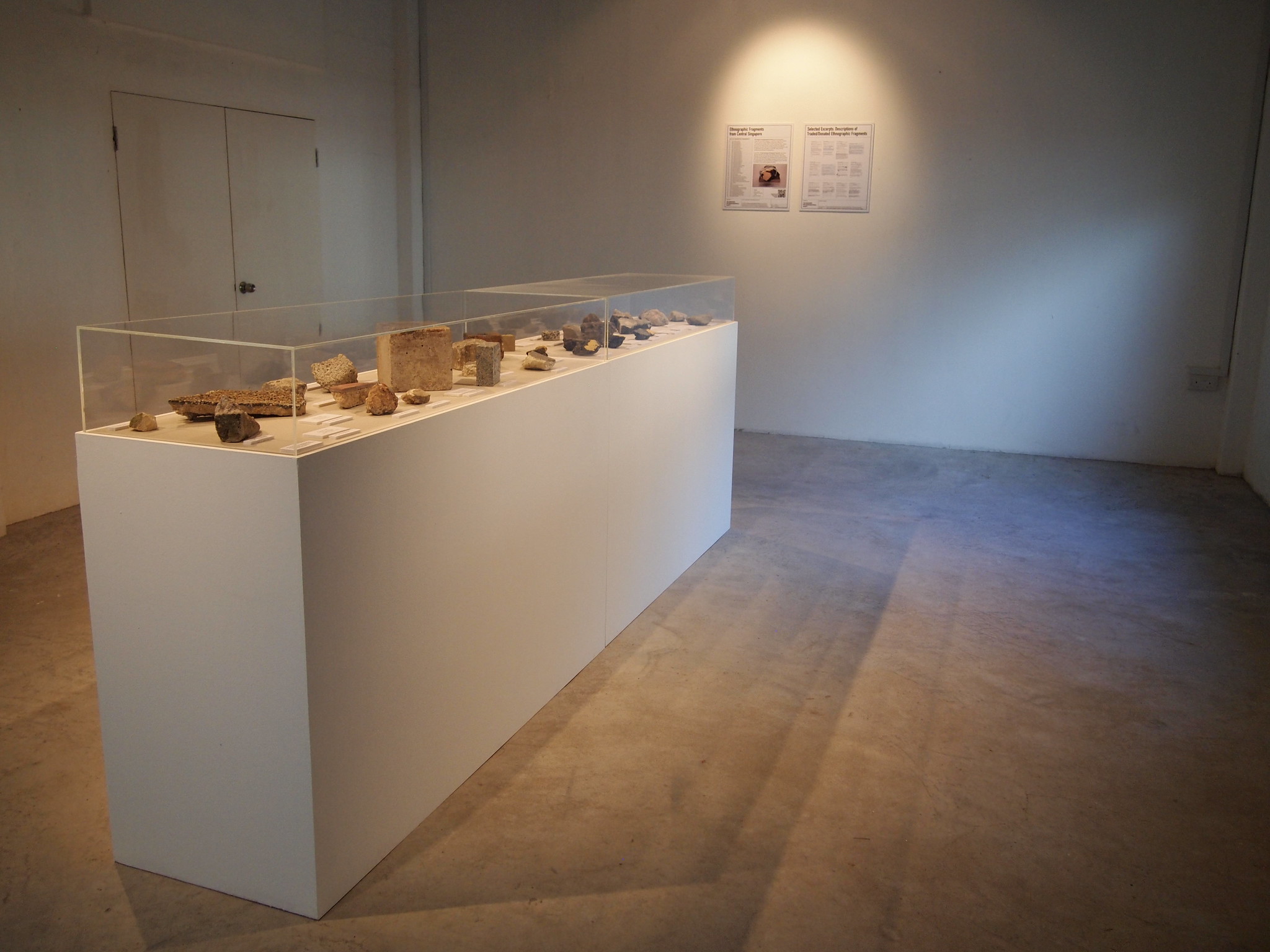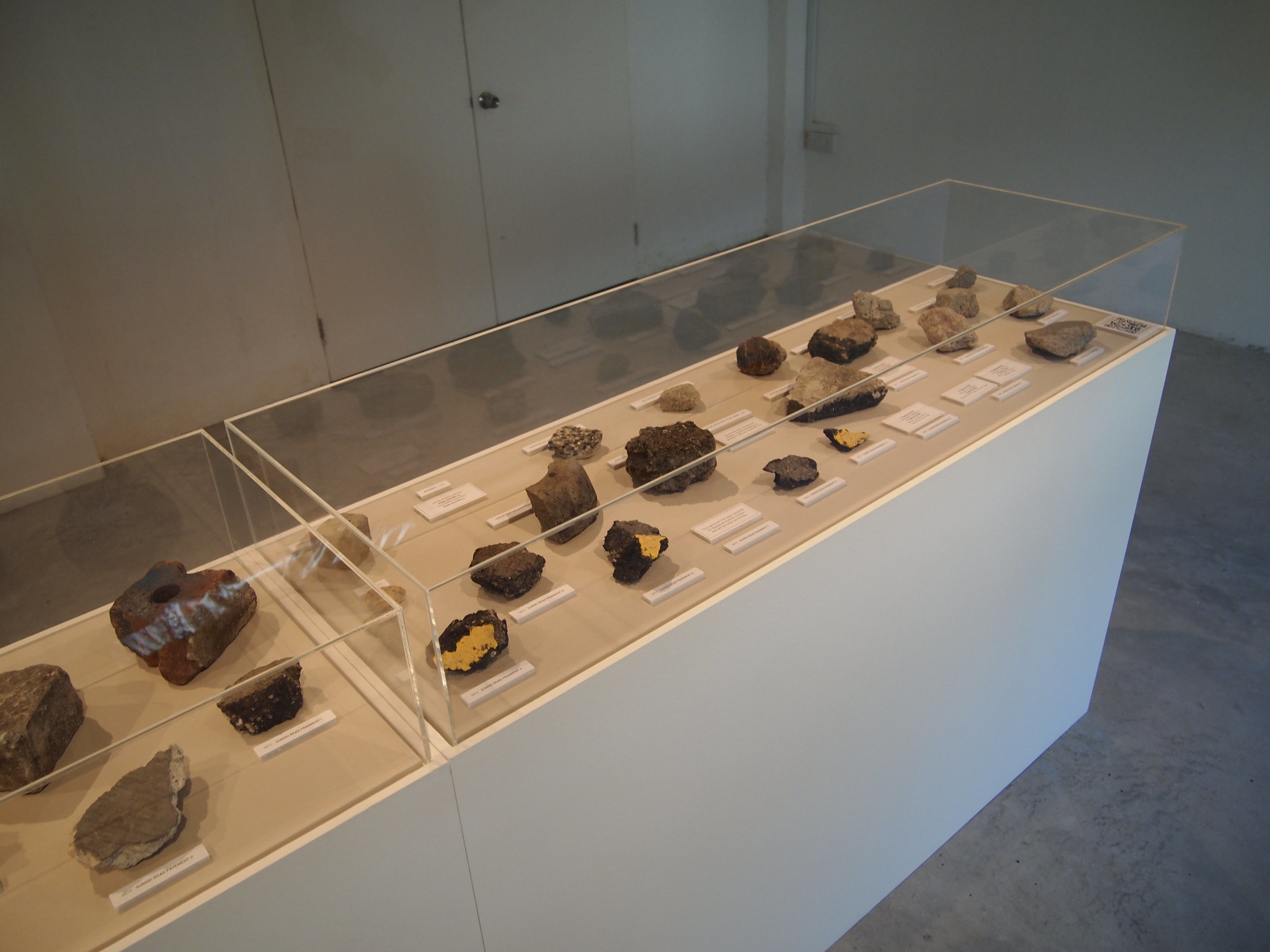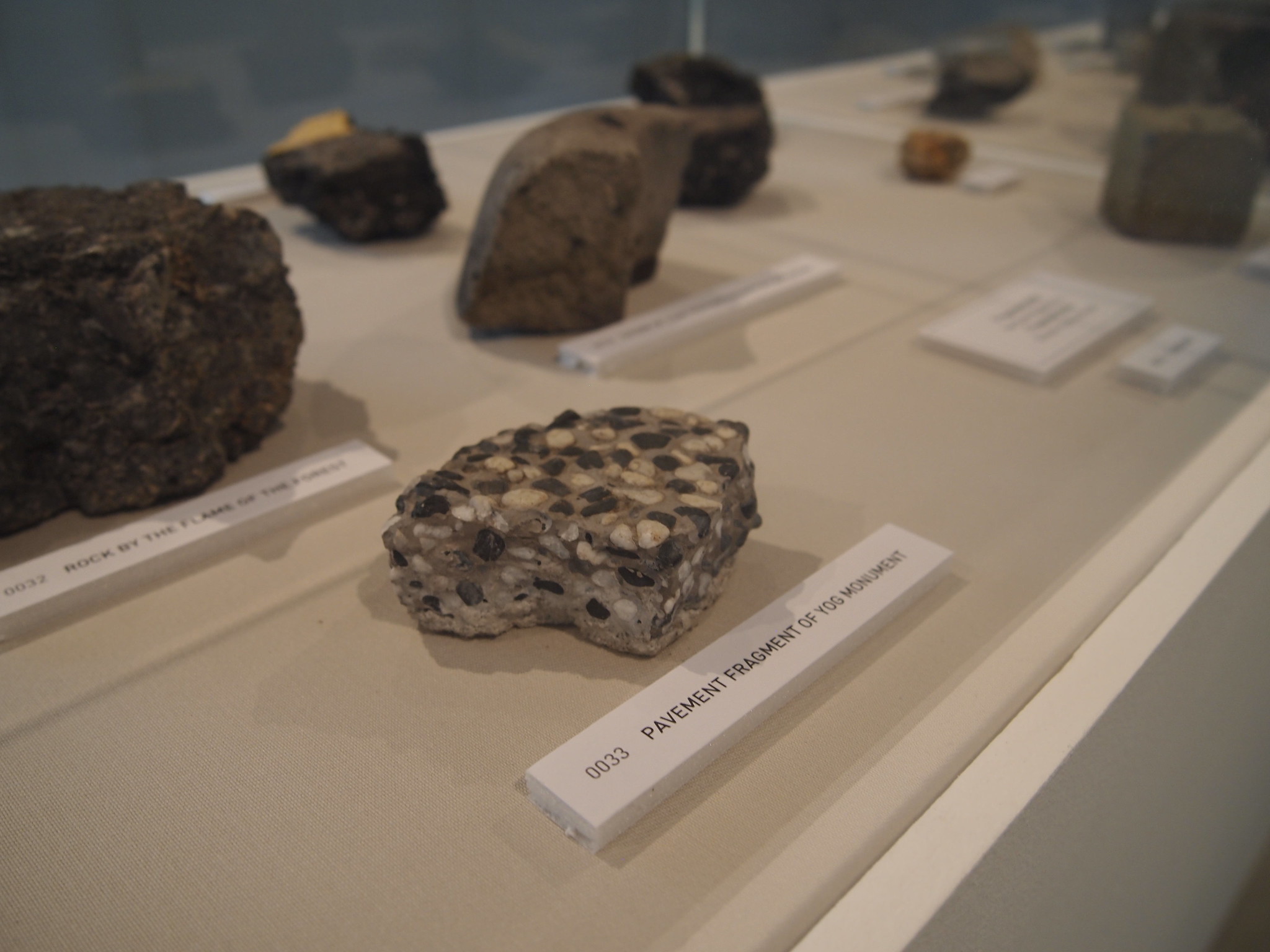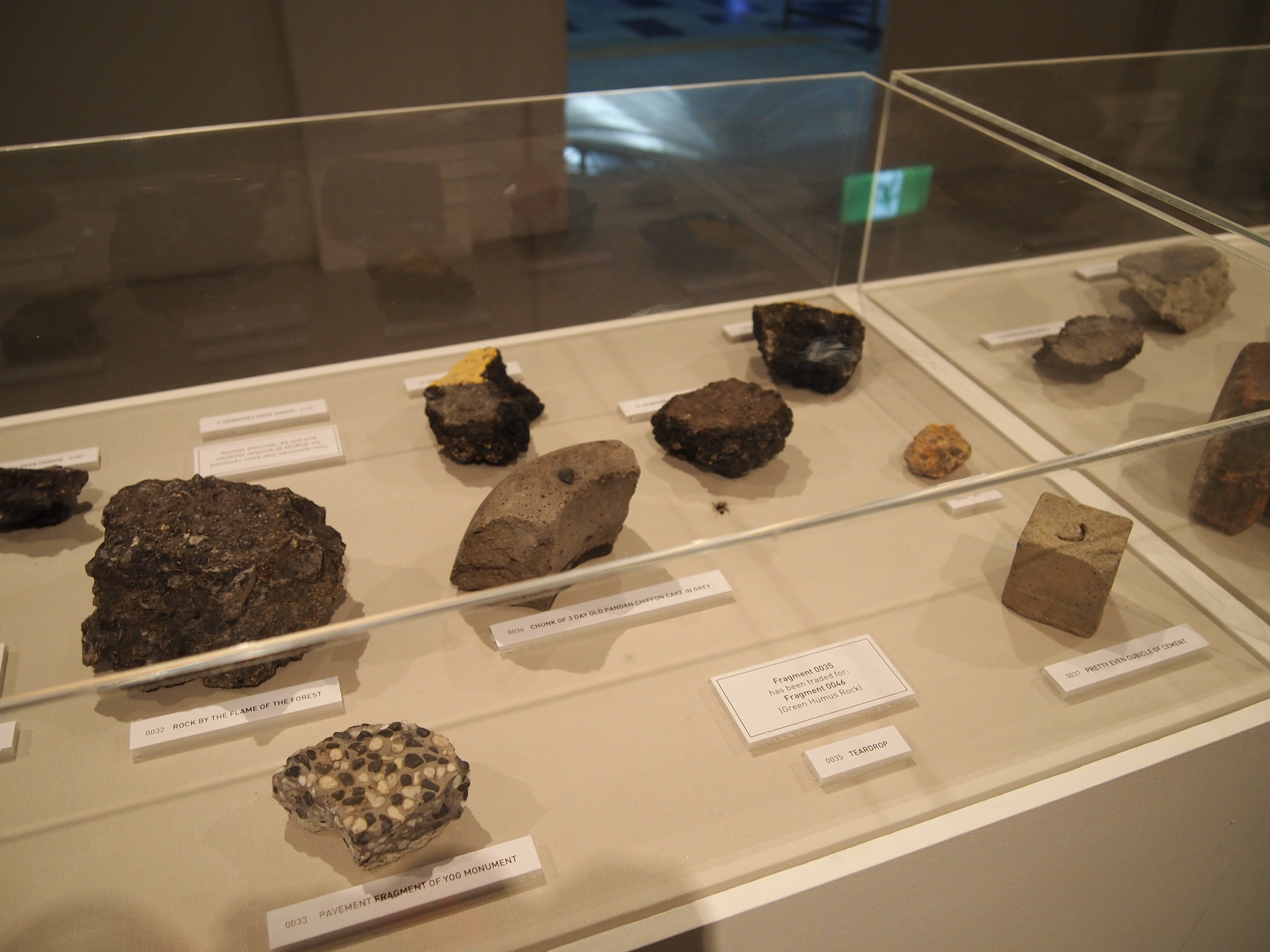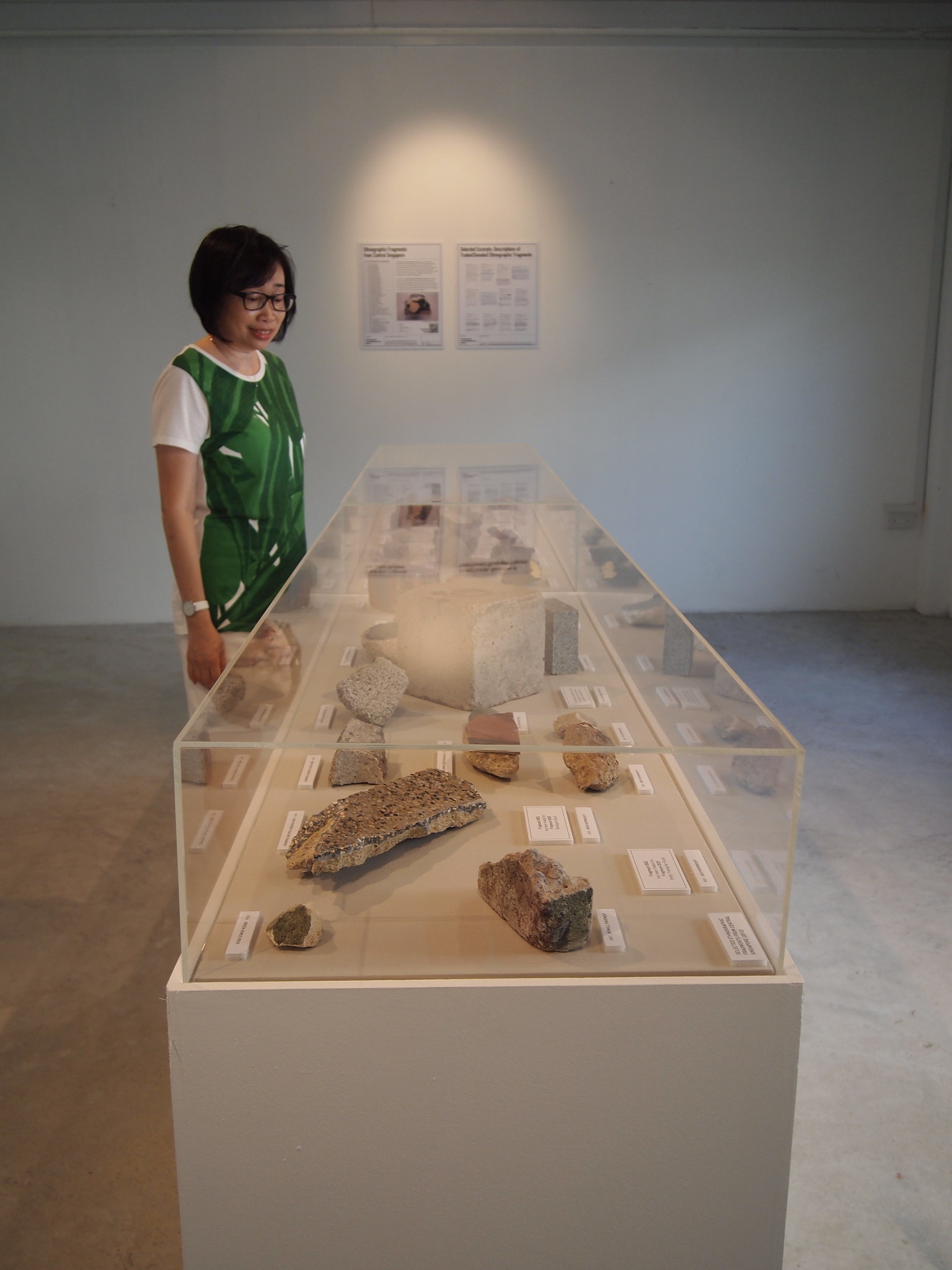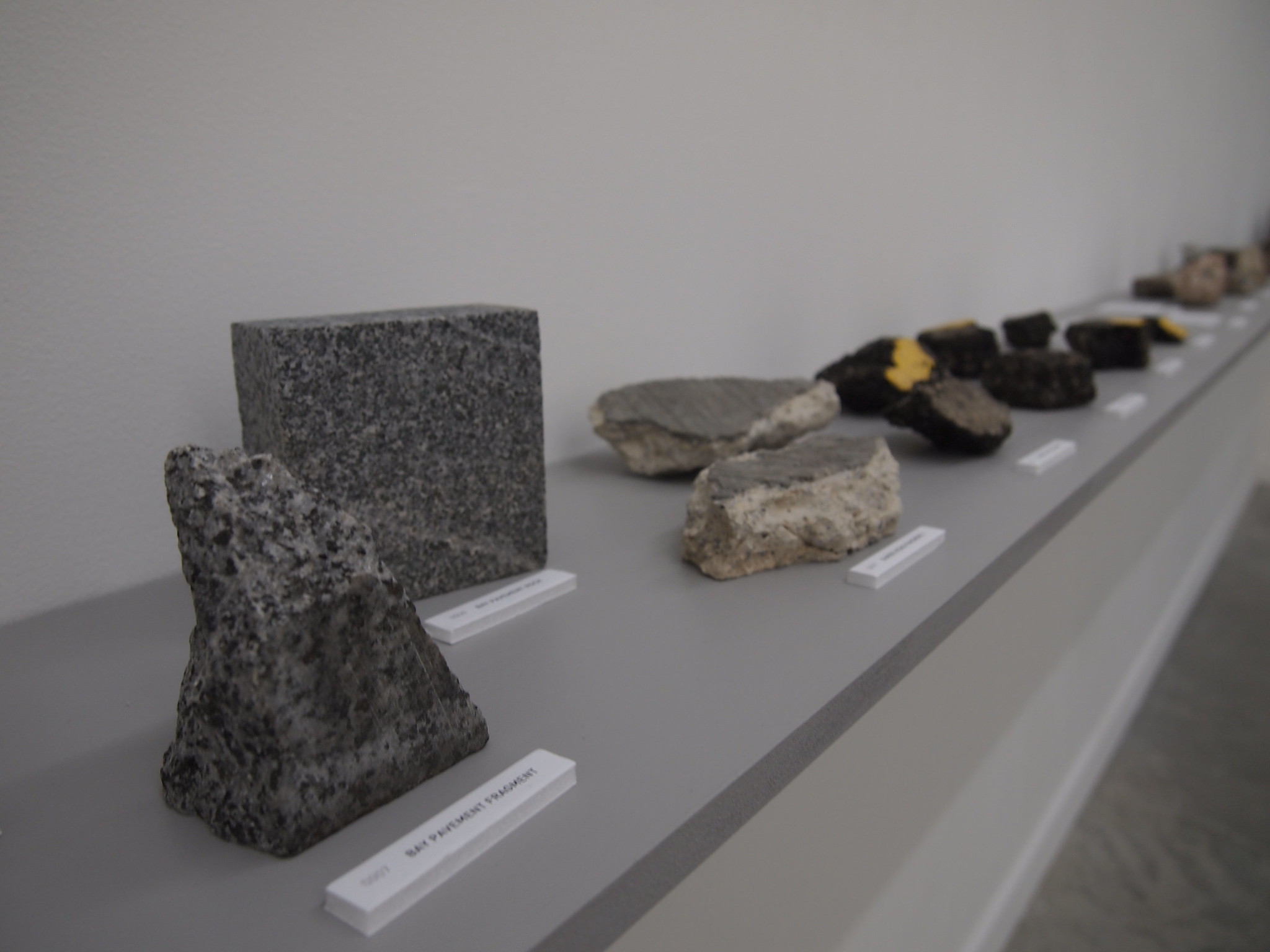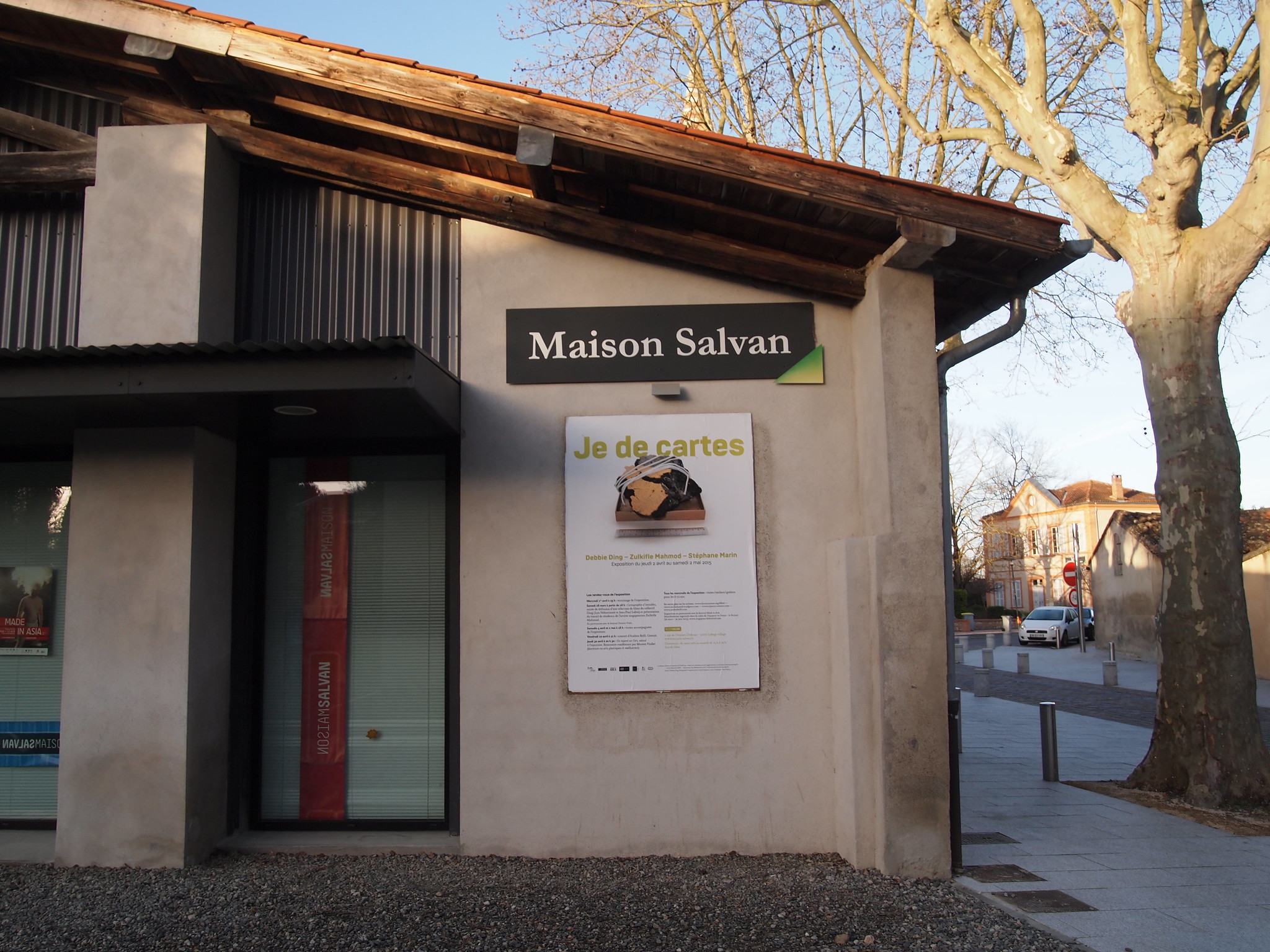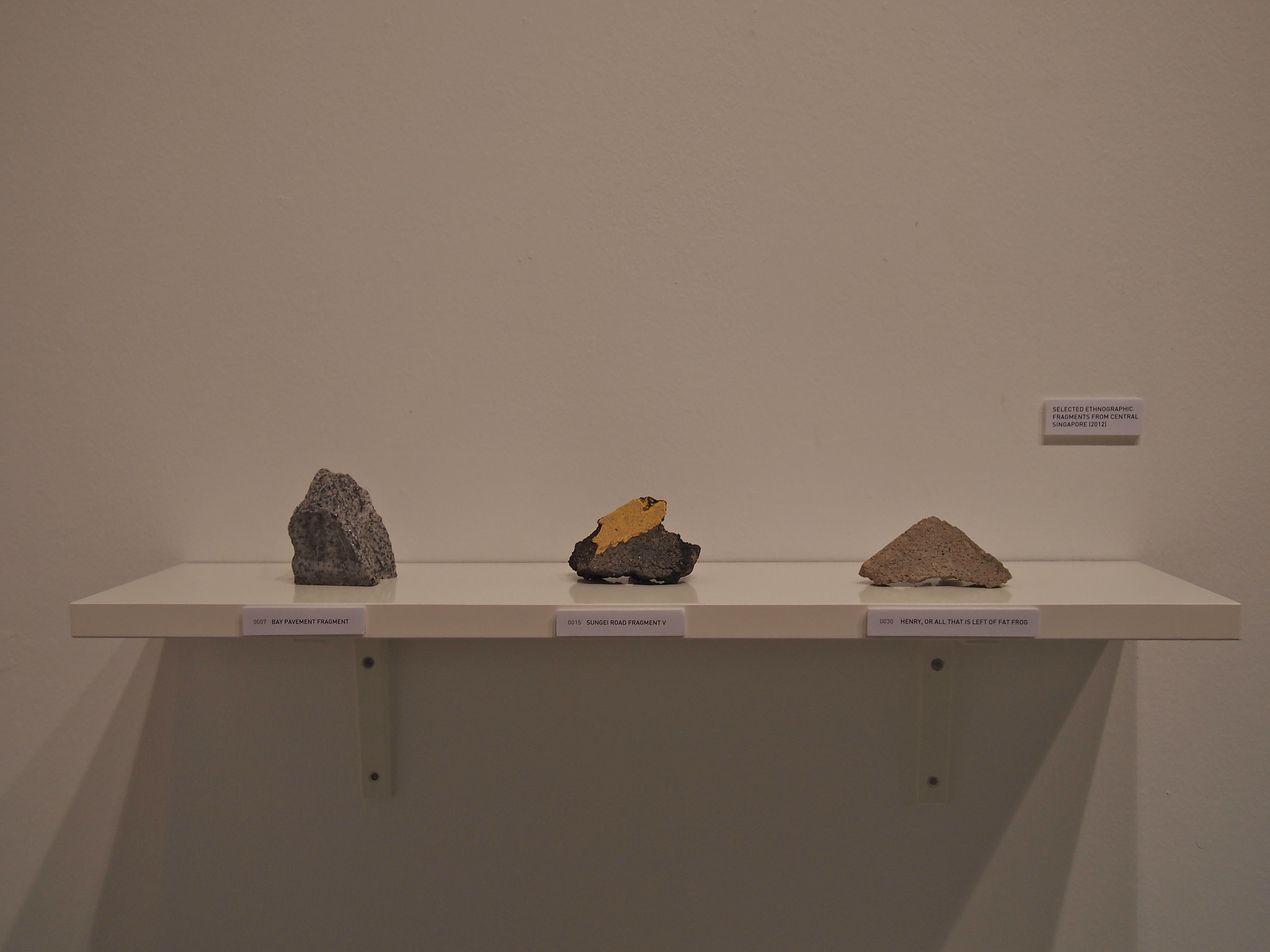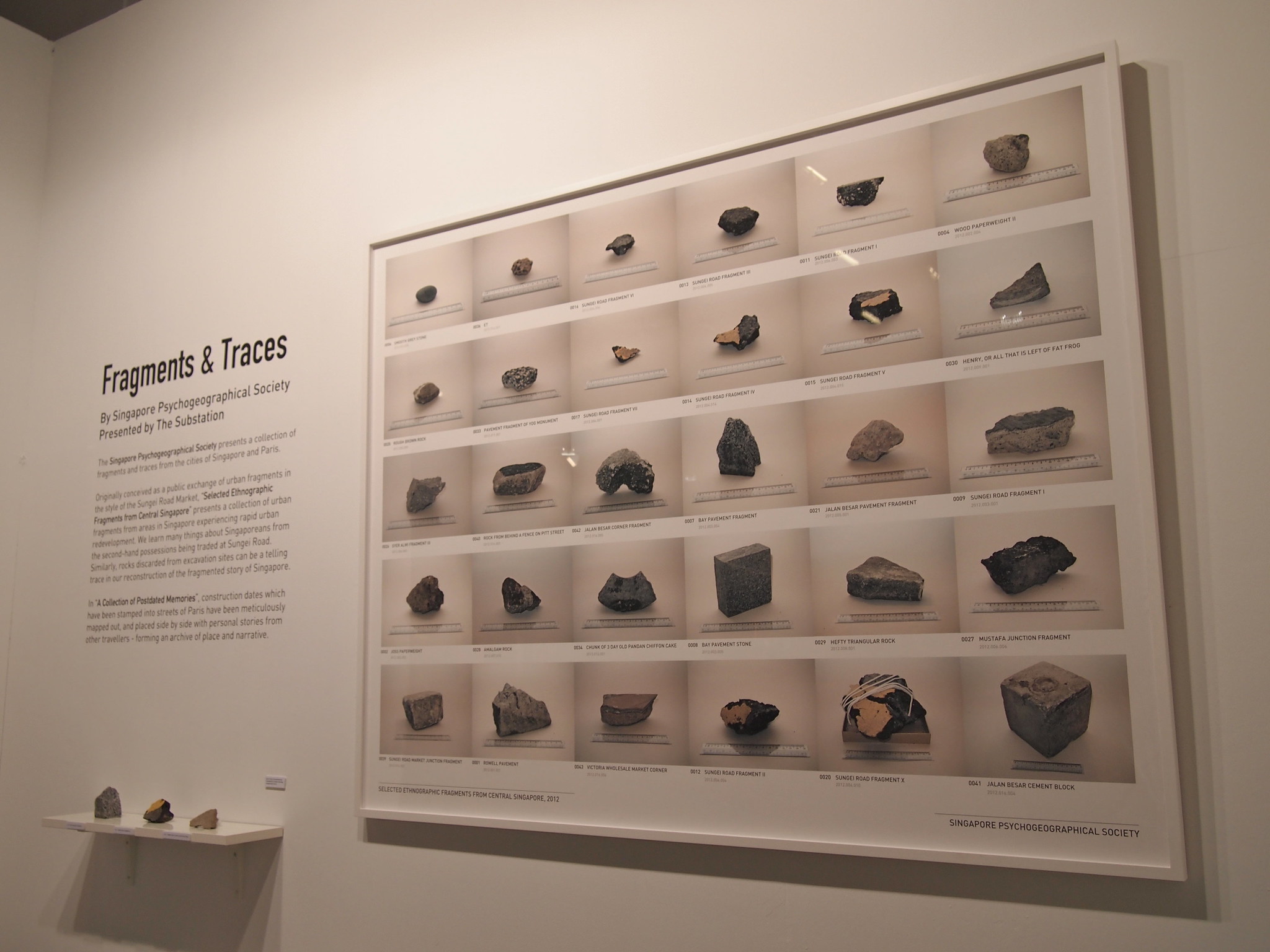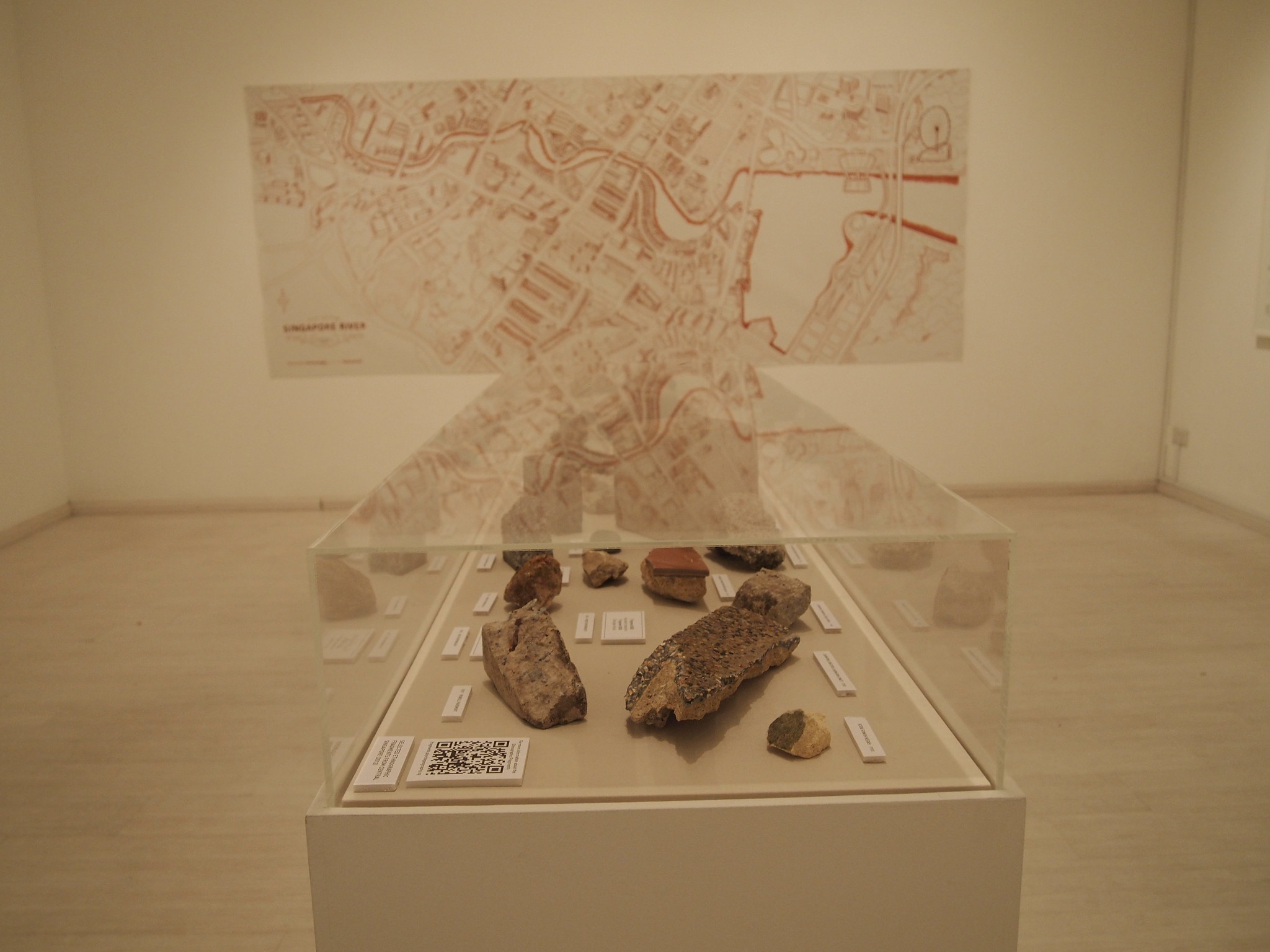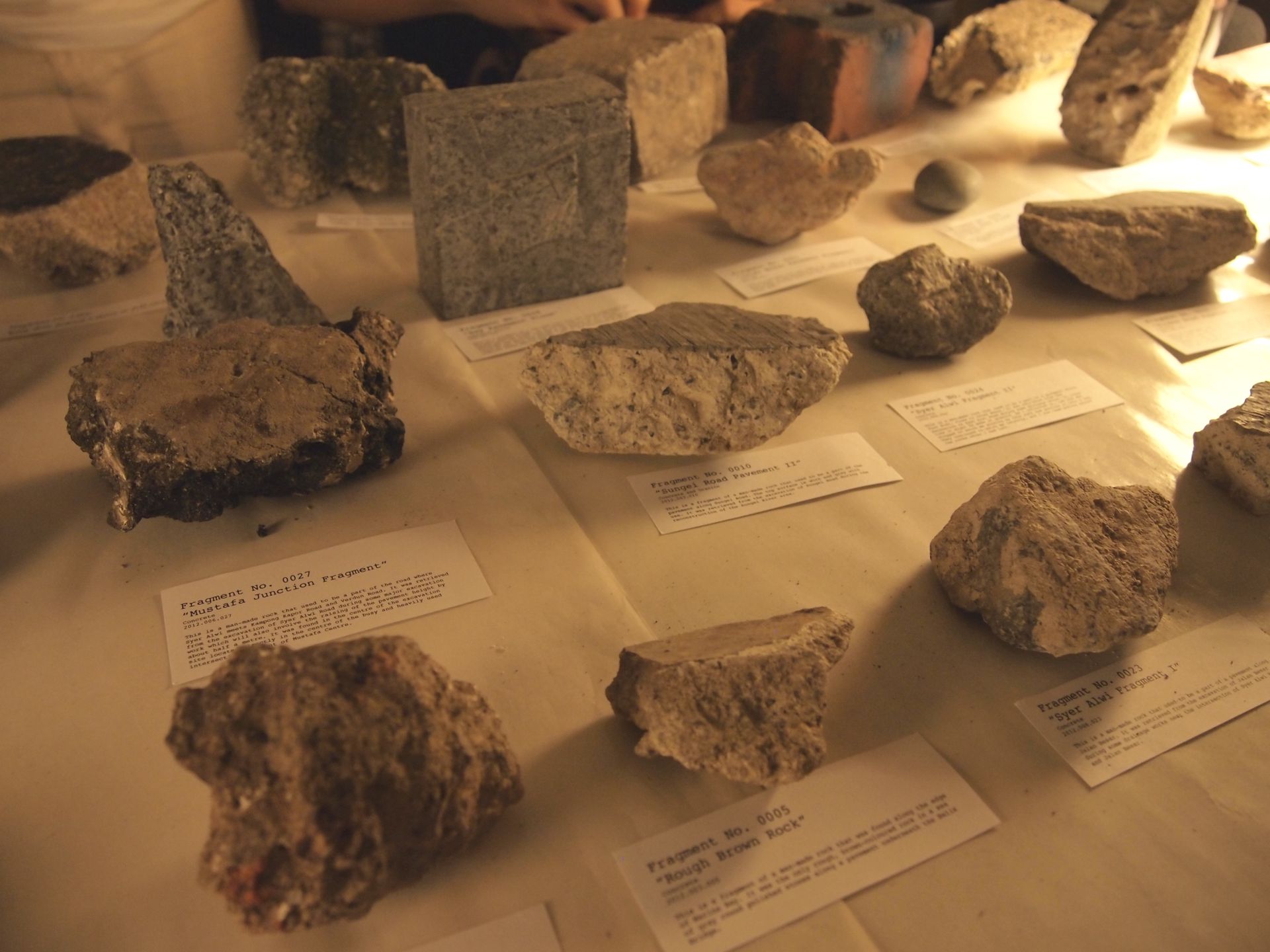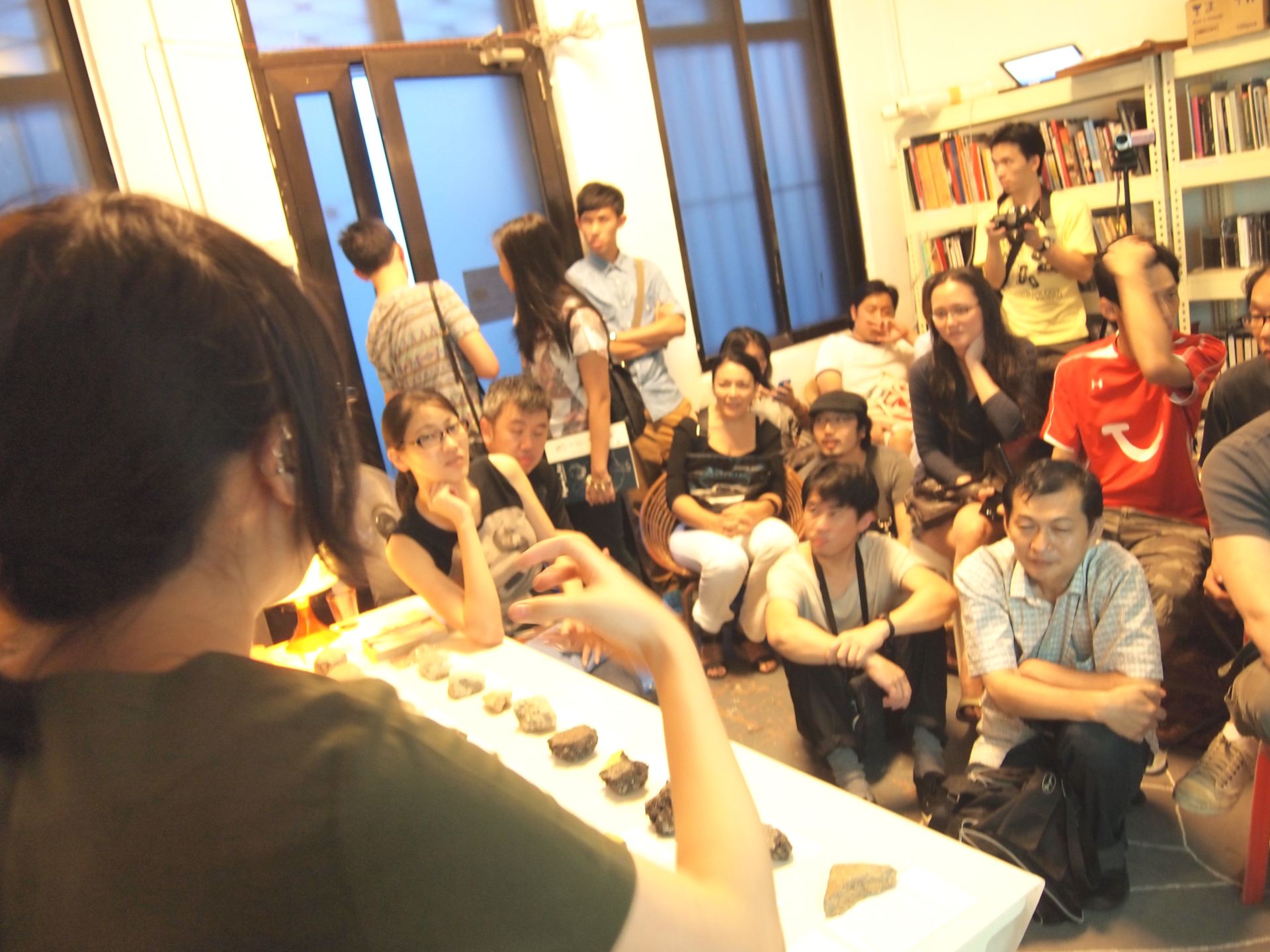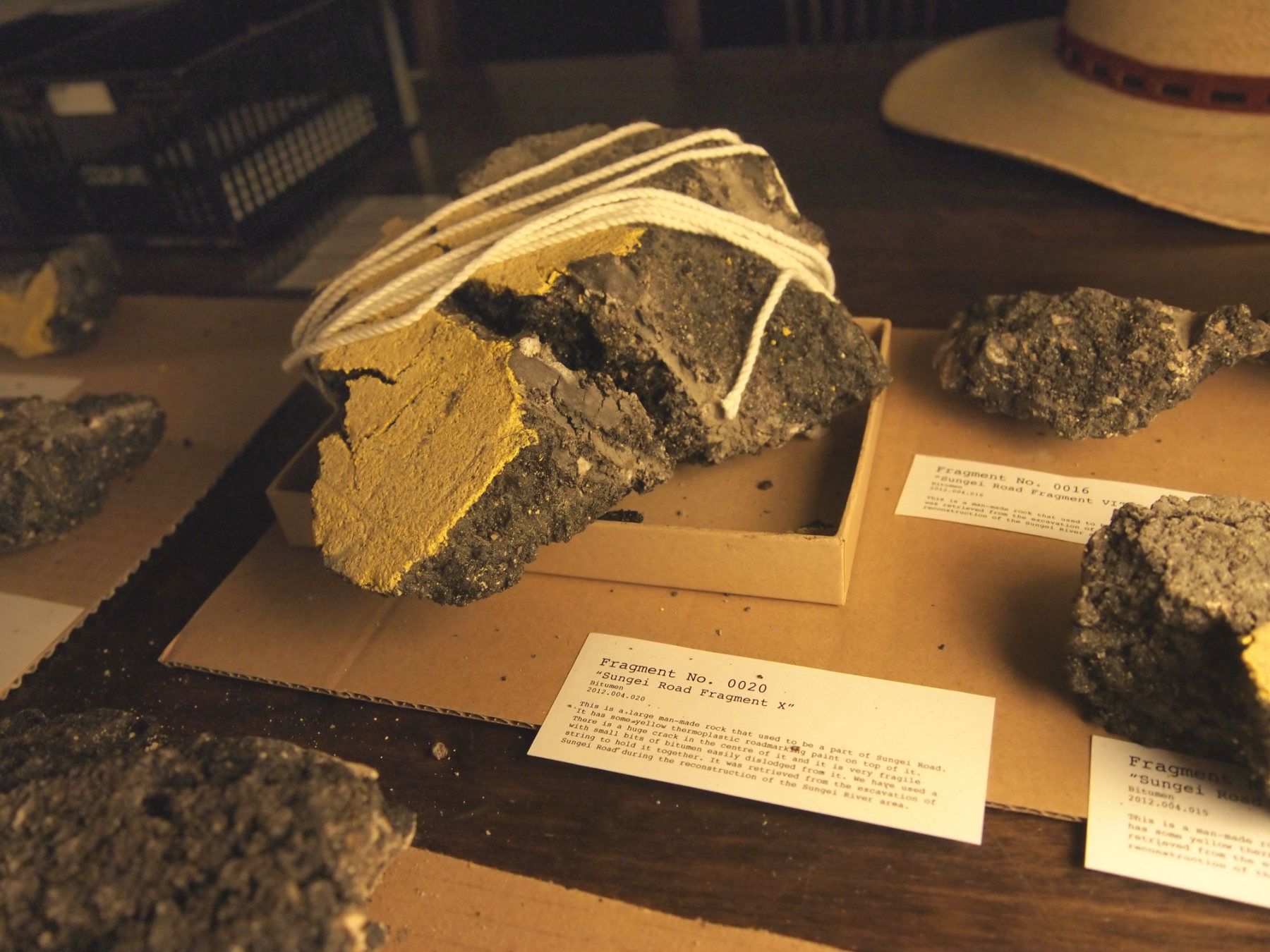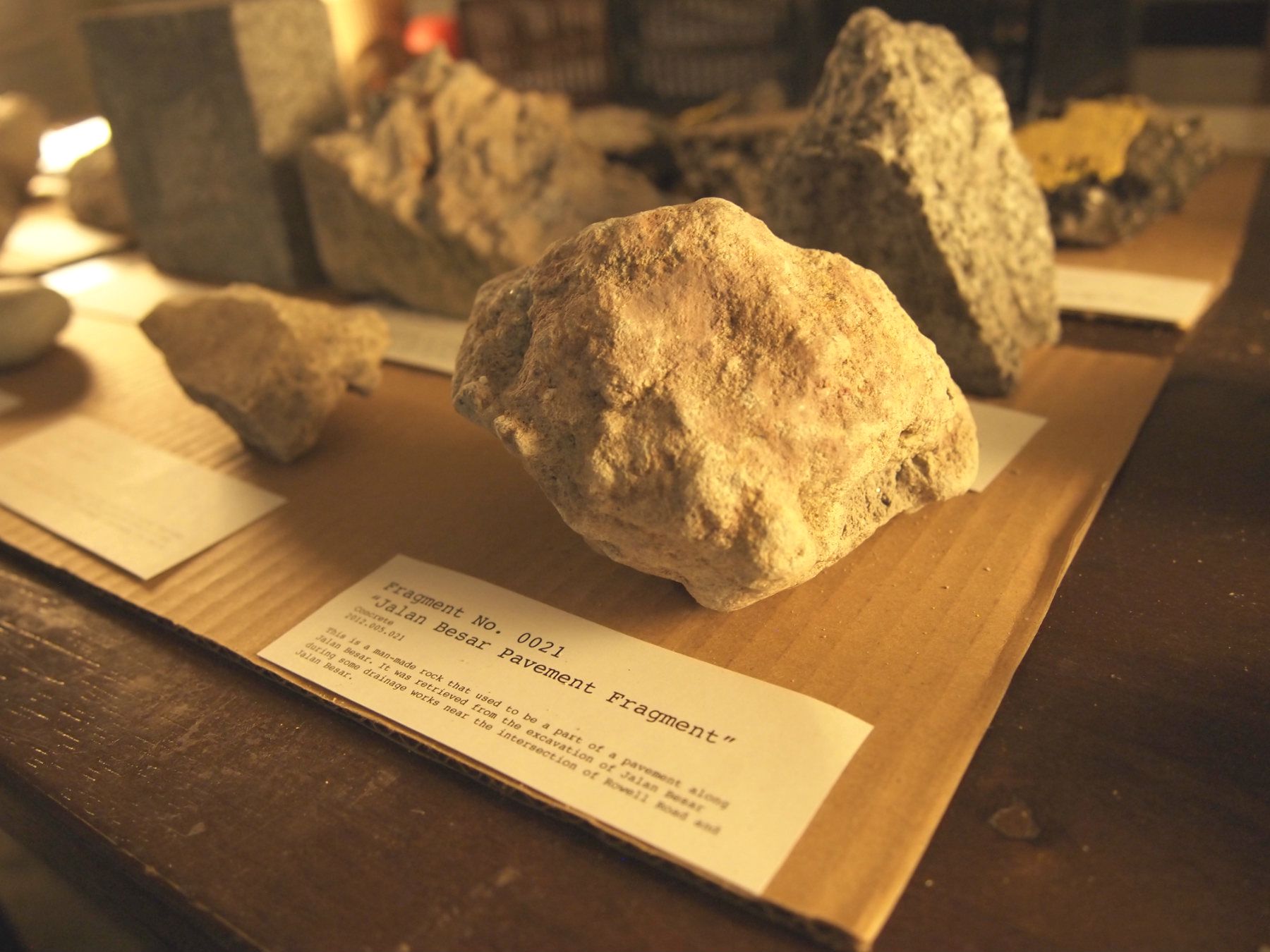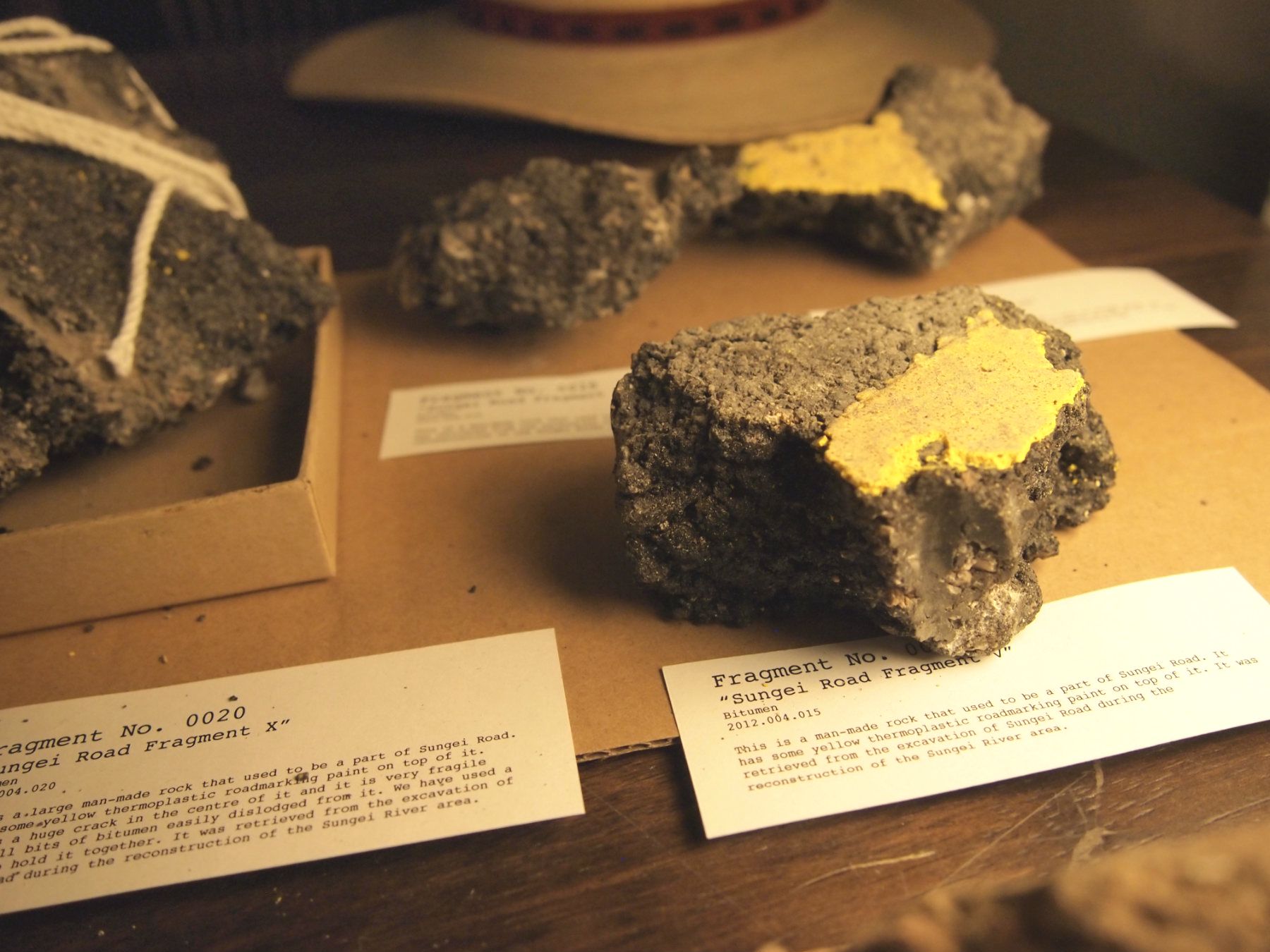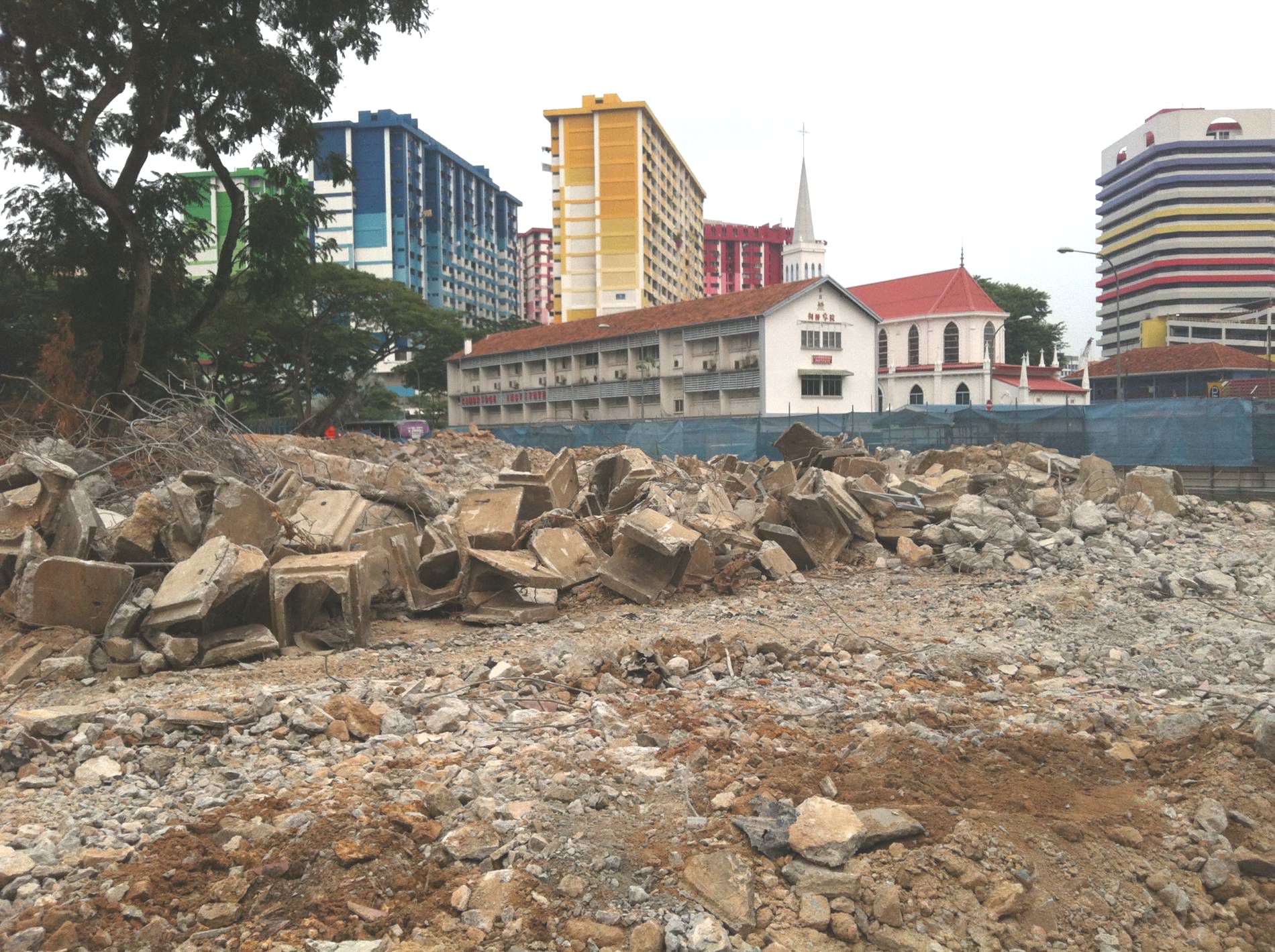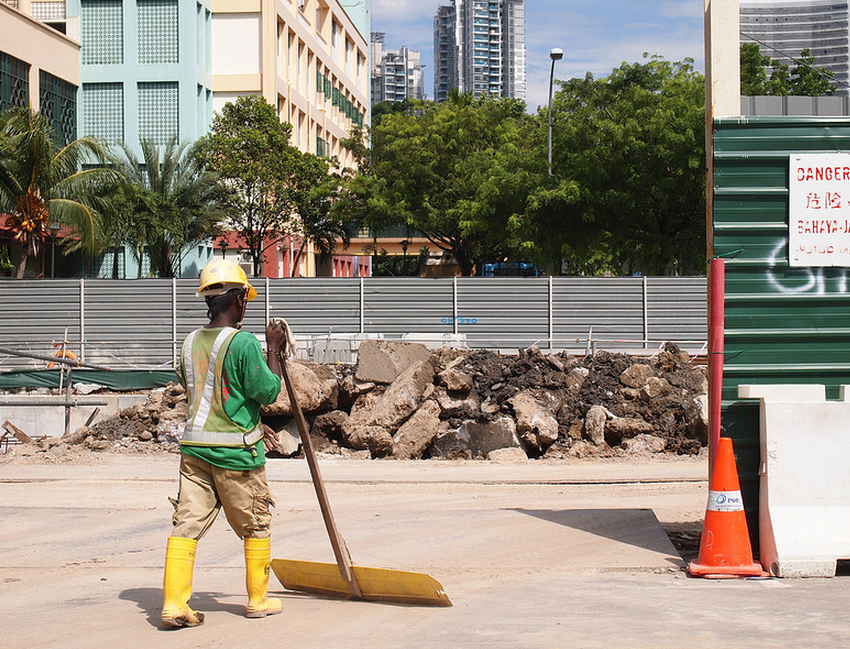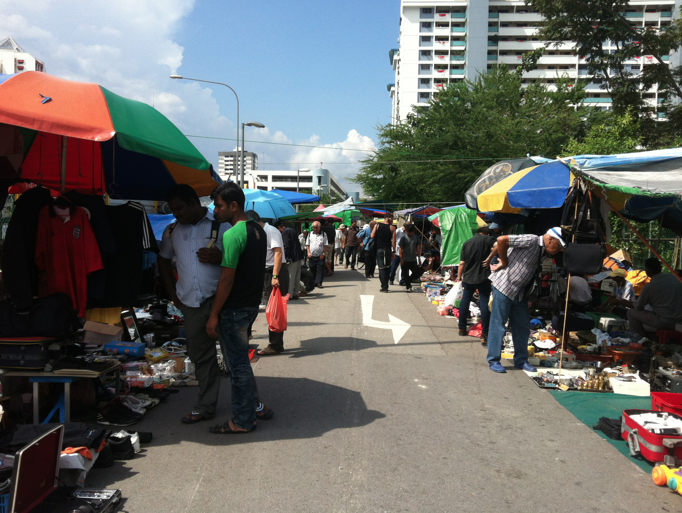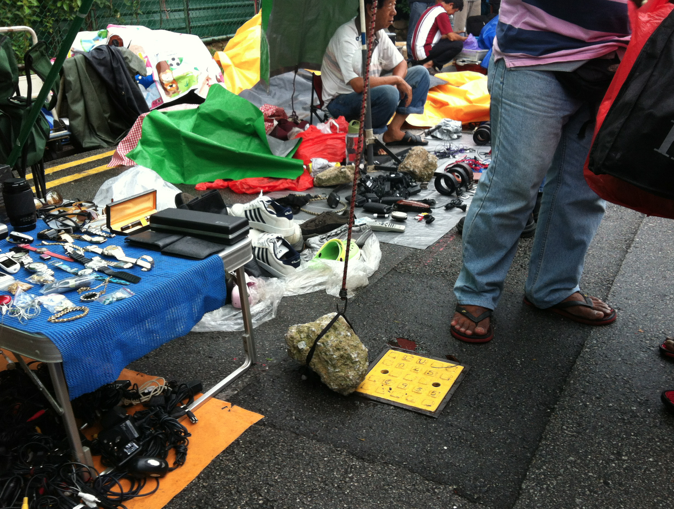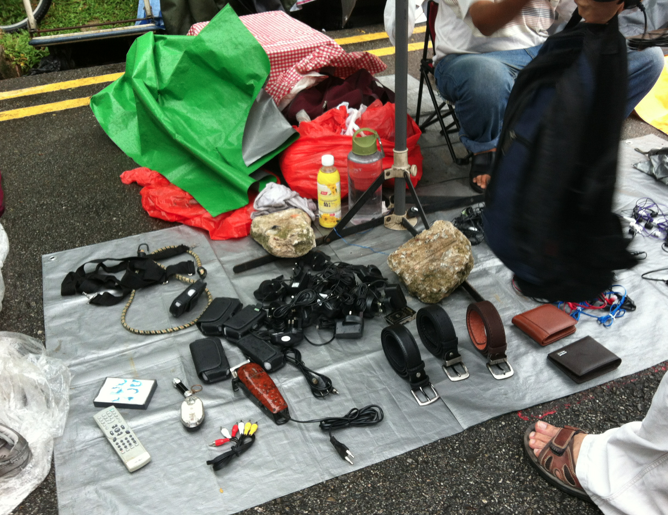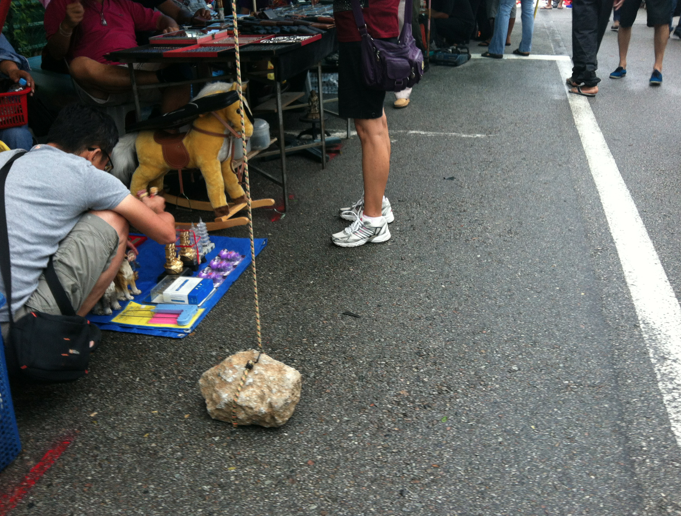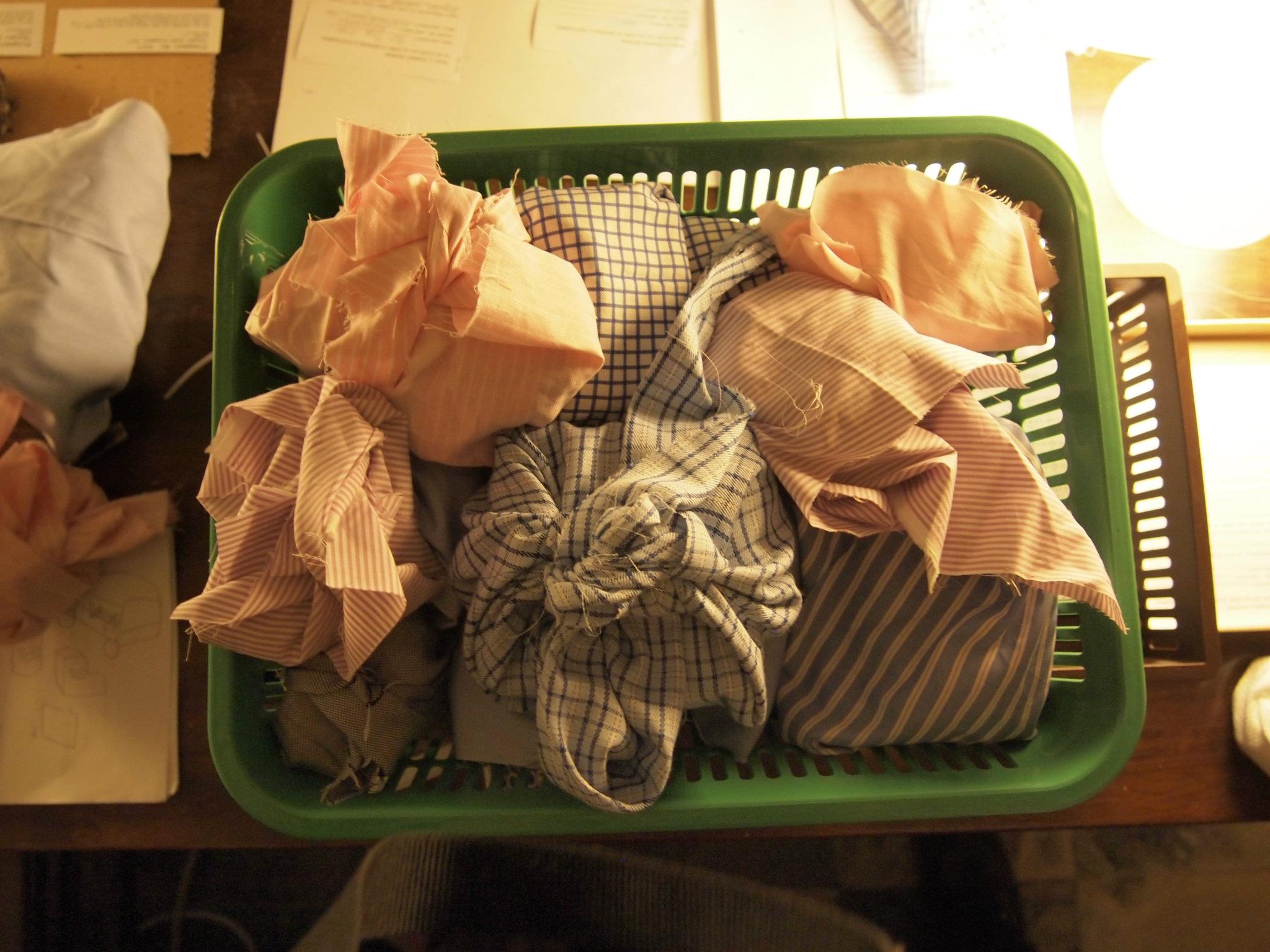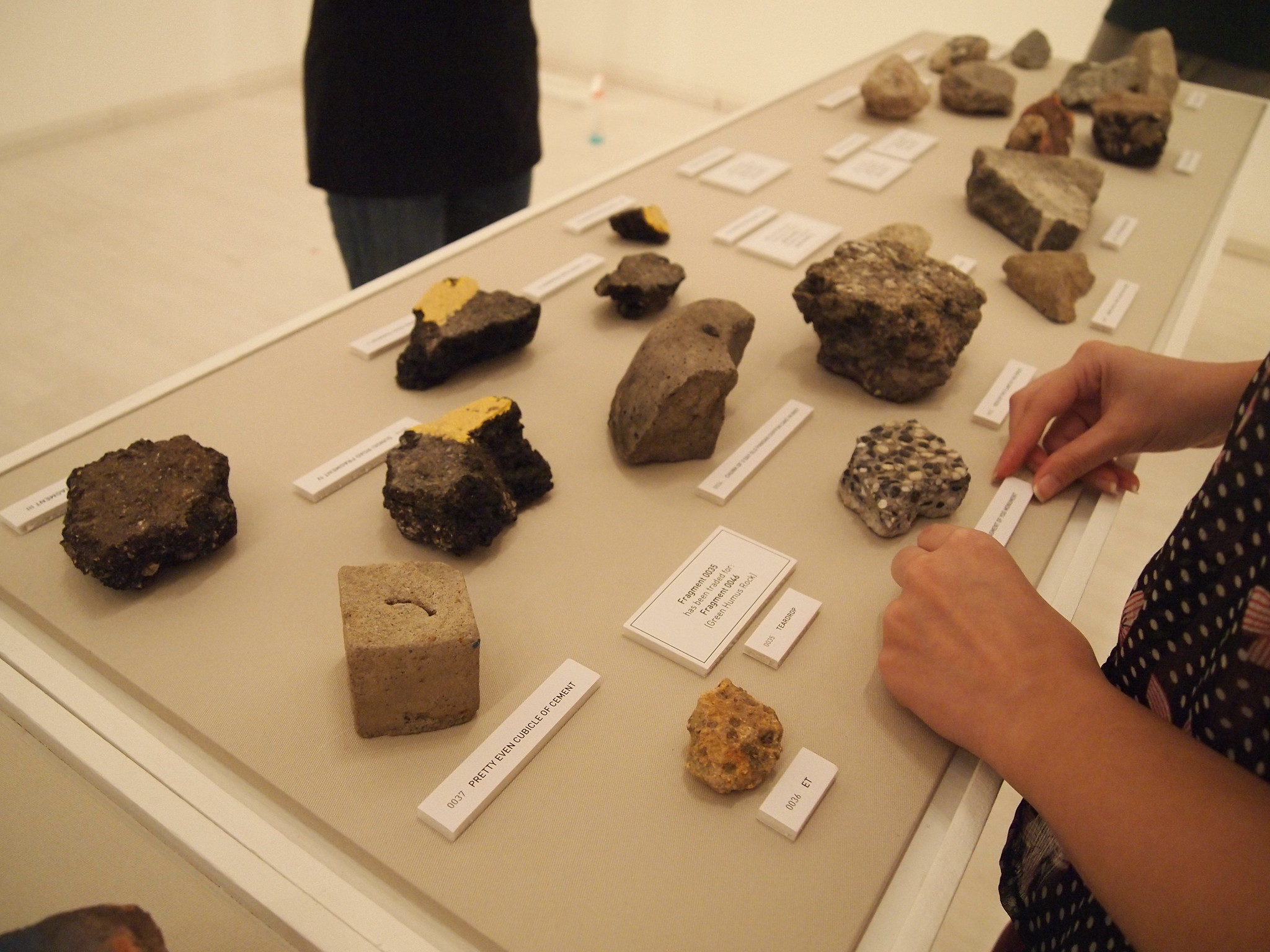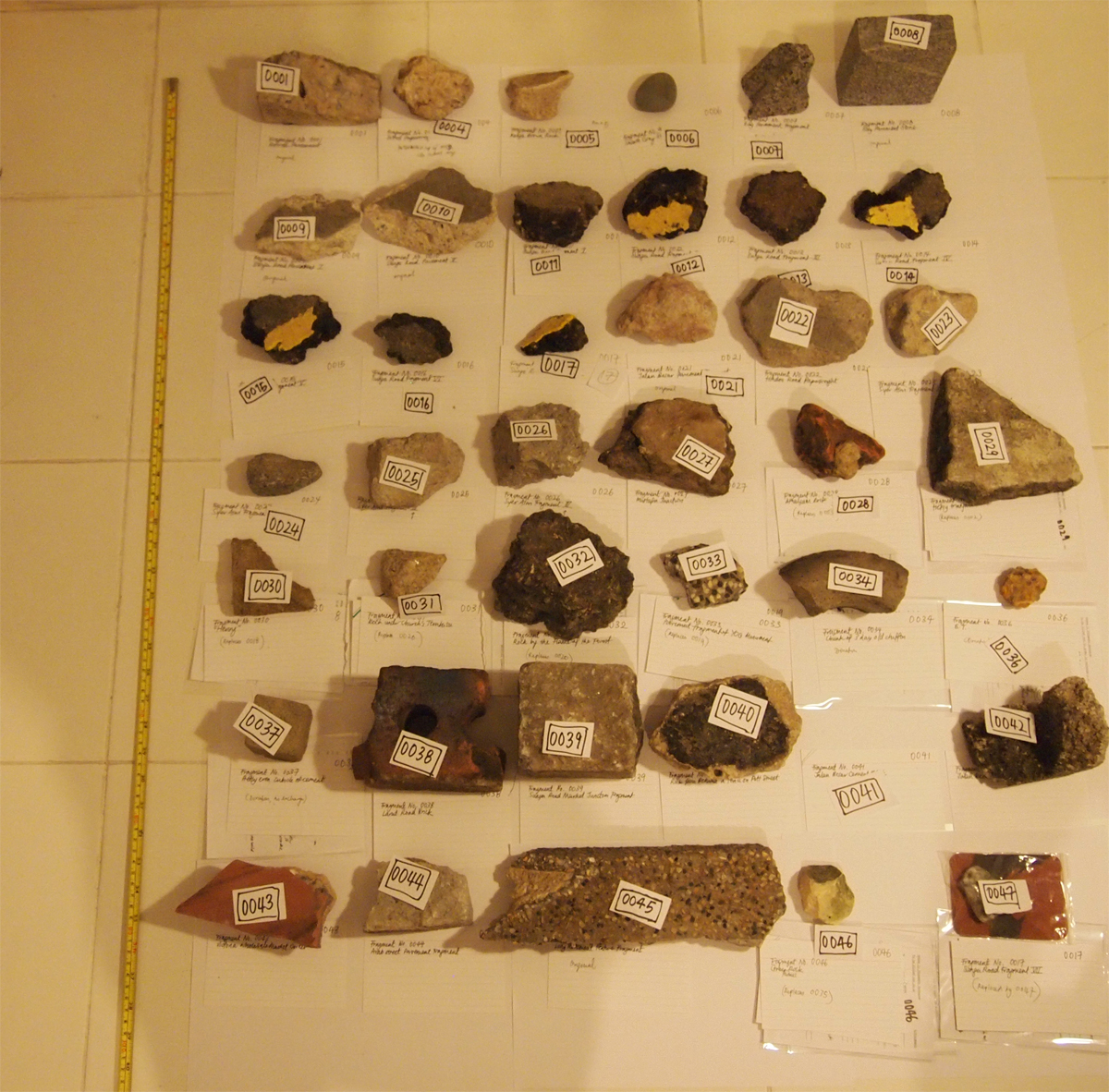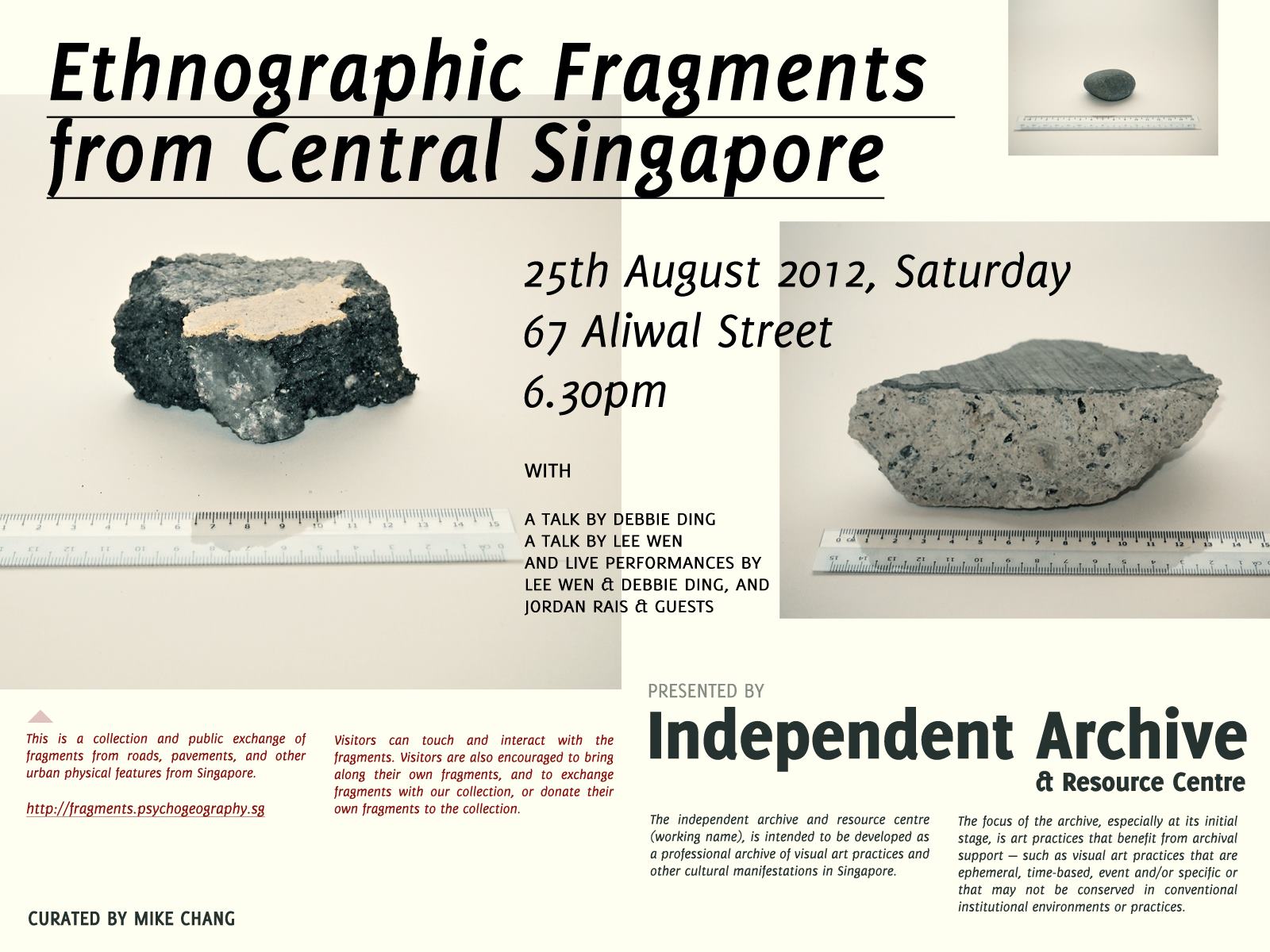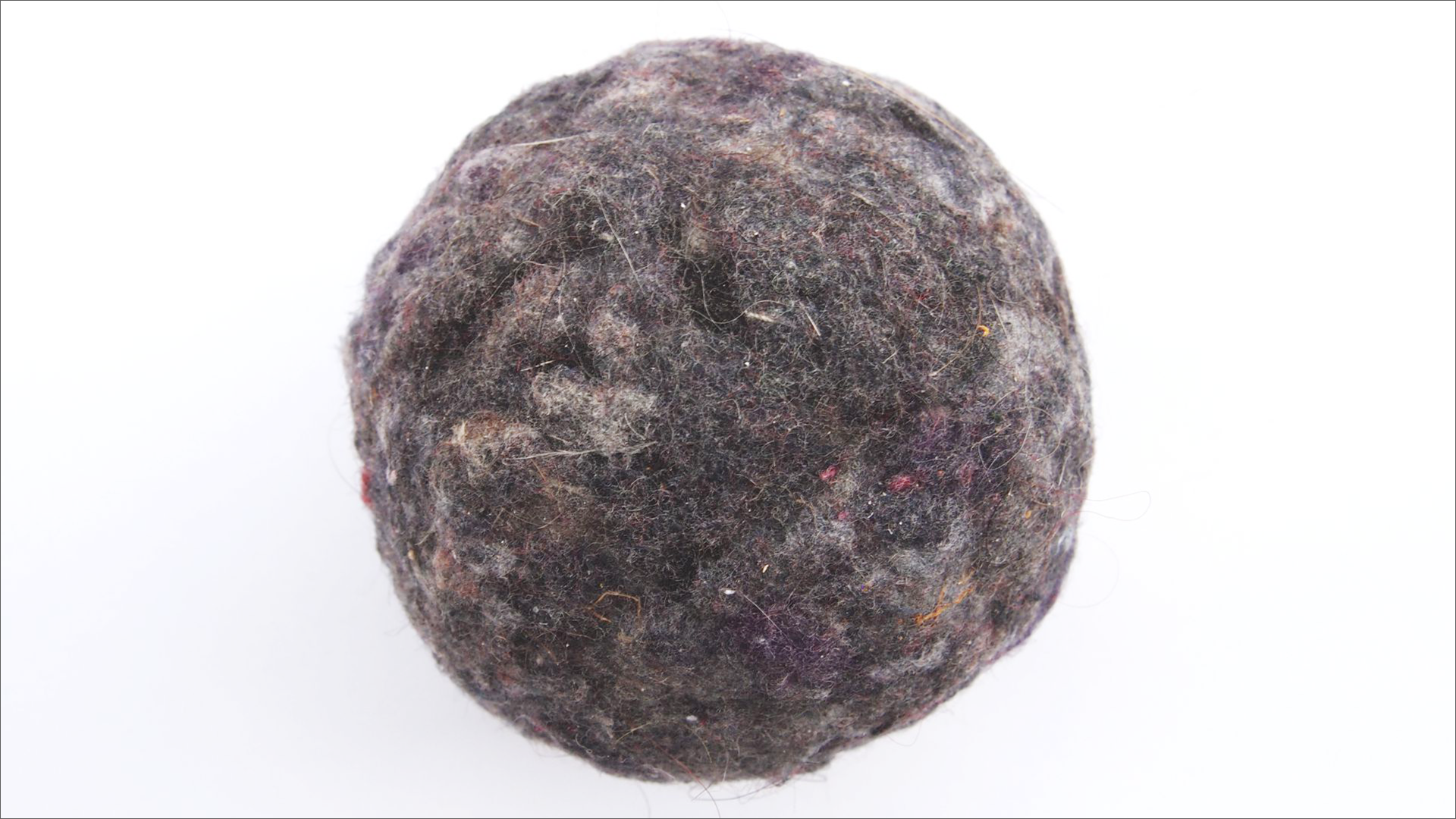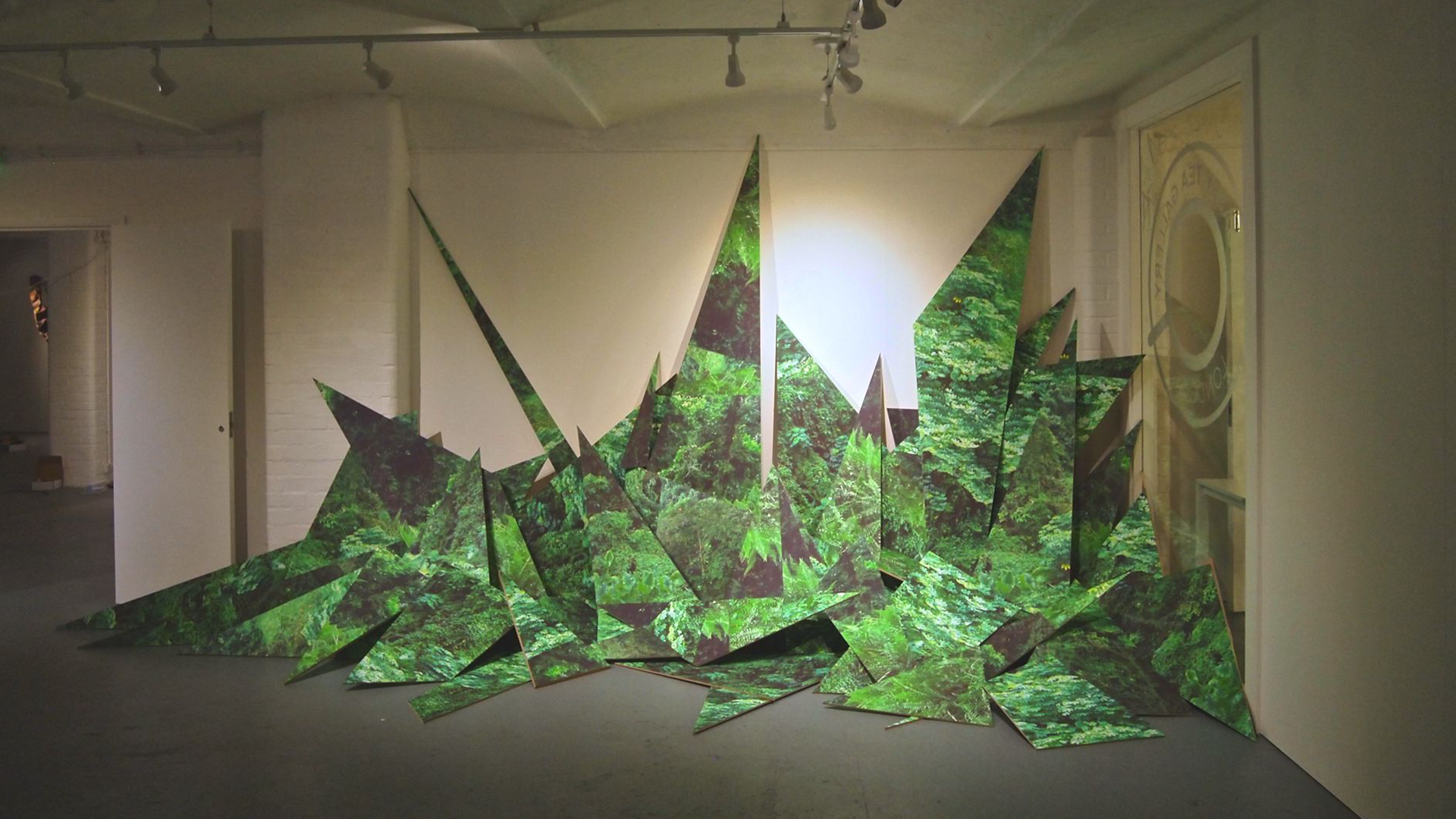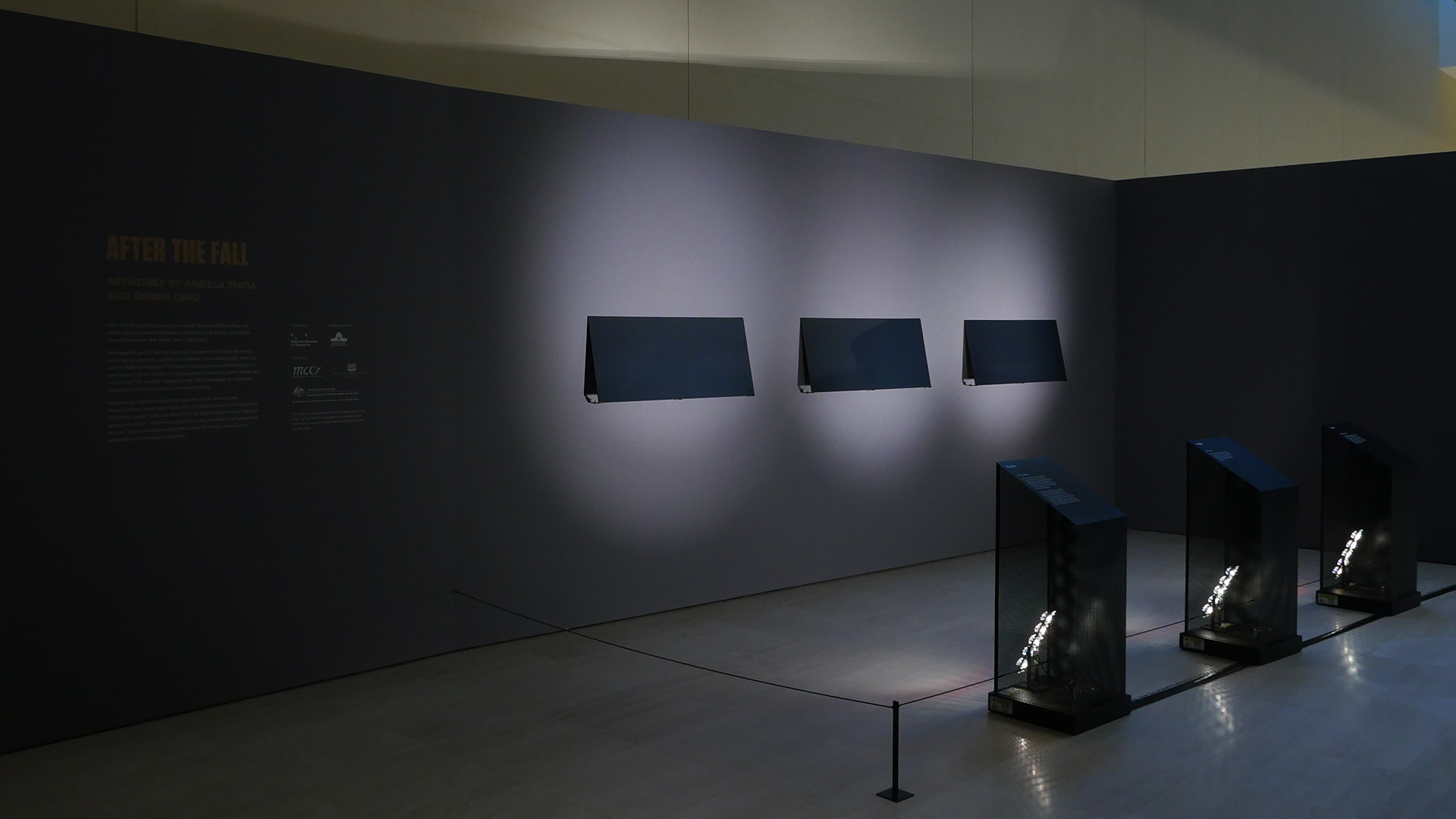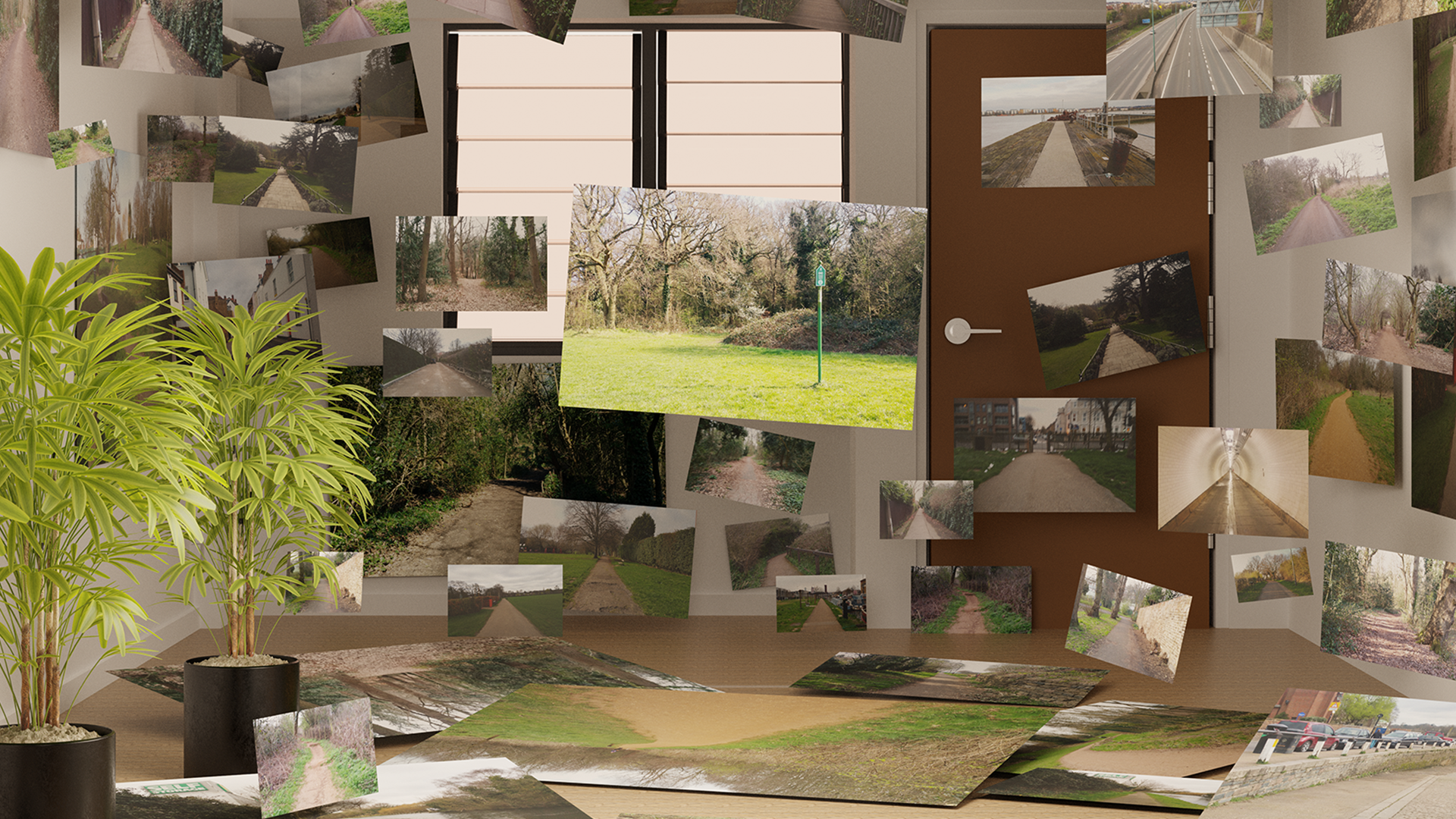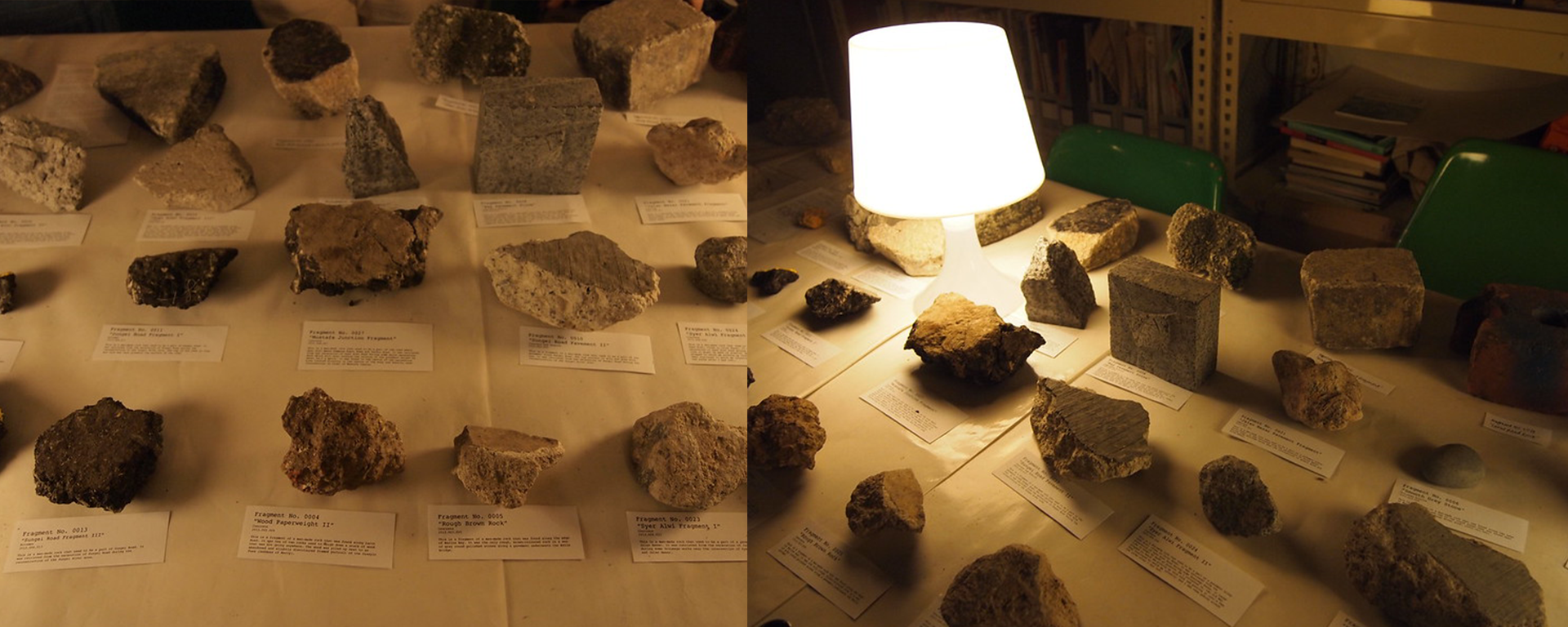
Ethnographic Fragments
A series of 27 fragments were collected from excavation sites near Sungei Road, a popular open-air street market that has existed since the Japanese Occupation, but which looks set to be demolished in 2014. After the initial collection of artifacts, "A Public Exchange of Ethnographic Fragments" was conducted. Members of the public were invited to come in to see and touch the fragments, or even exchange rocks.
At Sungei Road’s Thieves Market, we learn many things about Singaporeans as we look through vast piles of 2nd hand objects - the everyday objects that are used and then cast aside. Similarly, these broken man-made rocks that appear in vast quantities around construction sites in Singapore, can also be seen as a telling trace in our attempts to construct a Singapore story.
Welcome to A Public Exchange of Ethnographic Fragments at The Substation Random Room. Here in this mobile exhibit, you can touch, see, and even exchange rocks and other fragments from our collection.
Most of the fragments in our archive of rocks were originally collected from construction and excavation sites near Sungei Road, a popular open-air street market that first emerged during the hard years of the Japanese Occupation. For years, a “Thieves Market” flourished along the banks of the Rochor Canal, where the poor and desperate could buy all sorts of cheap or 2nd hand household goods and items. Up to the date the market was shut, it had a certain reputation for being a distribution point for stolen goods, antiques, and other curios.
In 2011, it was announced that the land upon which the market was situated was to be taken back by the government. The new Jalan Besar MRT (Downtown Line DT22) station was to be built over the area where Sungei Road Market has occupied for the last few decades, and construction for this station started in July 2011. Pasar Lane and Pitt Street were closed first, causing the stalls to become more and more compressed together, and a system had to be devised to demarcate the spaces allocated to different karung guni peddlars so as to accommodate them all within the shrinking confines of the Sungei Road Market.
As preparations for the construction were underway, the road was broken up into pieces and parts were excavated. In the construction process, the fragmented material from old roads can actually be recycled. The material may be ground up to be used as the mineral aggregate that is used to make other roads and pavements in Singapore.
Since mineral particles may be “recycled”, there might actually be the faintest possibility that we might encounter this very same particle of dirt again, but in the physical form of another road. However, by that point, it would be very unlikely that anyone would know of the history or its significance of that particular fragment having once been part of another historic road. It would instead, blend homogeneously into the body of the new road until the day that road was also to be dug up again.
To prevent the meaning from being forgotten, it was decided that some of these rocks had to be collected and removed from the site in a timely fashion. The rocks were taken from the site, wrapped in cloth for protection, and stored until an appropriate time arrived for them to be displayed as artefacts. In this process of removing it from the site, we also aimed to transform these rocks into ethnographic objects.
Ethnography refers to an area of social anthropology aimed at studying the culture of groups of people. We can glean clues about the social meanings within the ordinary activities of people through the objects that they use on an everyday basis. Just as a walk through Sungei Road’s “Thieves Market” can reveal many things about Singaporeans as we look through the vast piles of 2nd hand objects from Singapore, these man-made rocks – which appear in huge quantities near construction sites all around Singapore – can also be seen as a telling trace in the story of Singapore and the attempts to construct a Singaporean identity.
The objects that are examined in the process of an ethnographic study are also known as “ethnographic objects”. In some cases, some of the objects we want to study may be physically broken or too severely fragmented to be considered as whole or complete objects, so we have chosen to describe them as “ethnographic fragments”. Singapore is full of fragments, whether it be physical fragments like the rubble from construction, but also fragments of histories and narratives.
Ethnographic fragments are not only “fragmented” because of their physical state of being a fragment from a larger body, but also in the way that they have become objects of ethnography – particularly the manner in which they are detached and defined and made into objects; removed in time and space from their original site.
It is the narrative that transforms it into an object that becomes valuable for conservation and display – in other words, it is the story that enables it to become a “cultural artefact”, rather than the mere consideration of its aesthetics.
We value these man-made rock fragments as being part of the physical fabric of Singapore. It may be man-made, and it might all look the same, but it is still part of the physical land on which we live and walk on. It is quite literally, a little piece of Singapore that we can hold on to.
We encourage others to look around their urban environments, to examine the physical fragments of the land around them, and to stop and appreciate these little fragments of Singapore.
2012
Assemblage
The Substation Random Room
Galerie Steph
Independent Archive
Singapore Art Museum
Maison Salvan (Toulouse)
